





Sleek, smart, knows its way




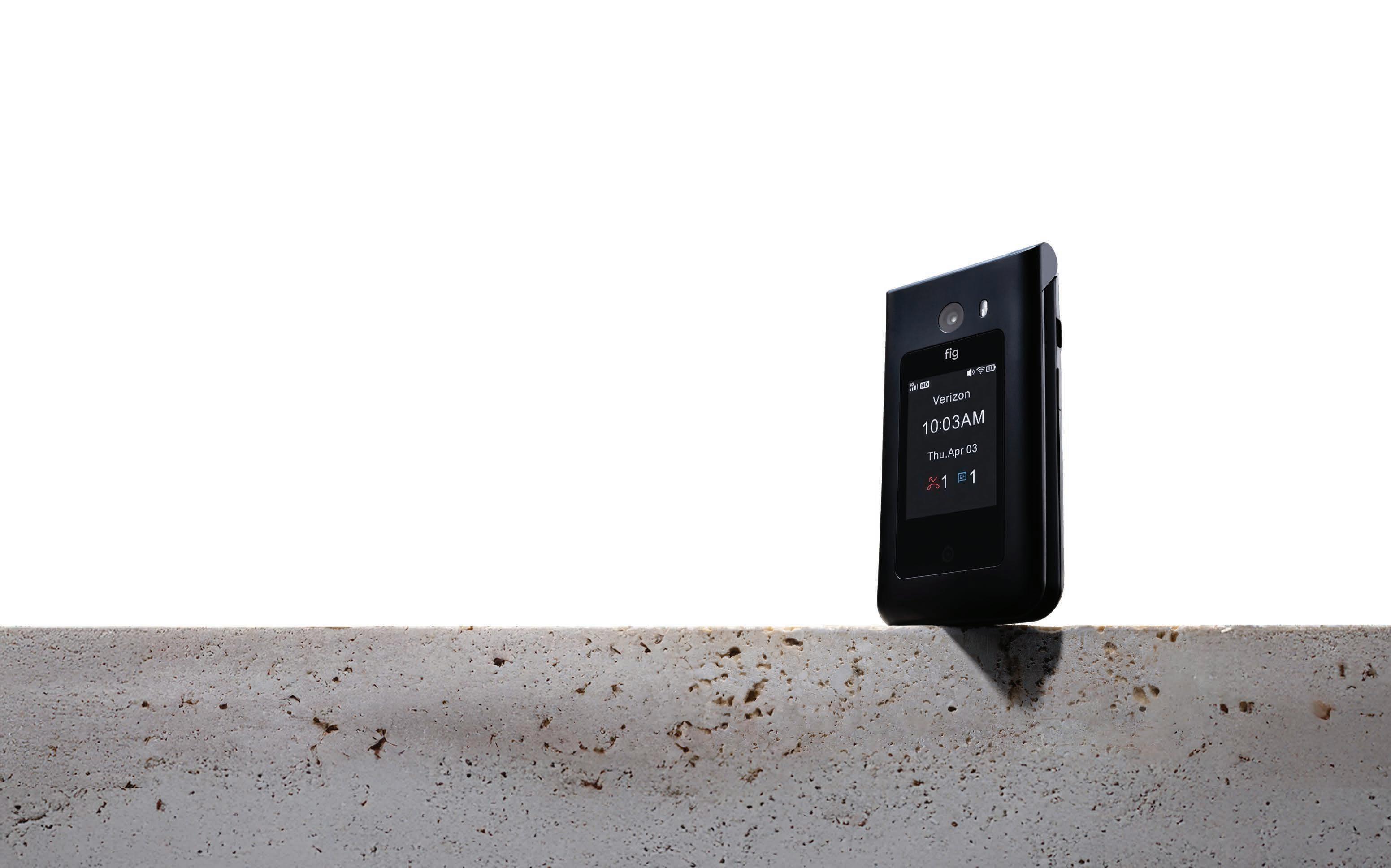







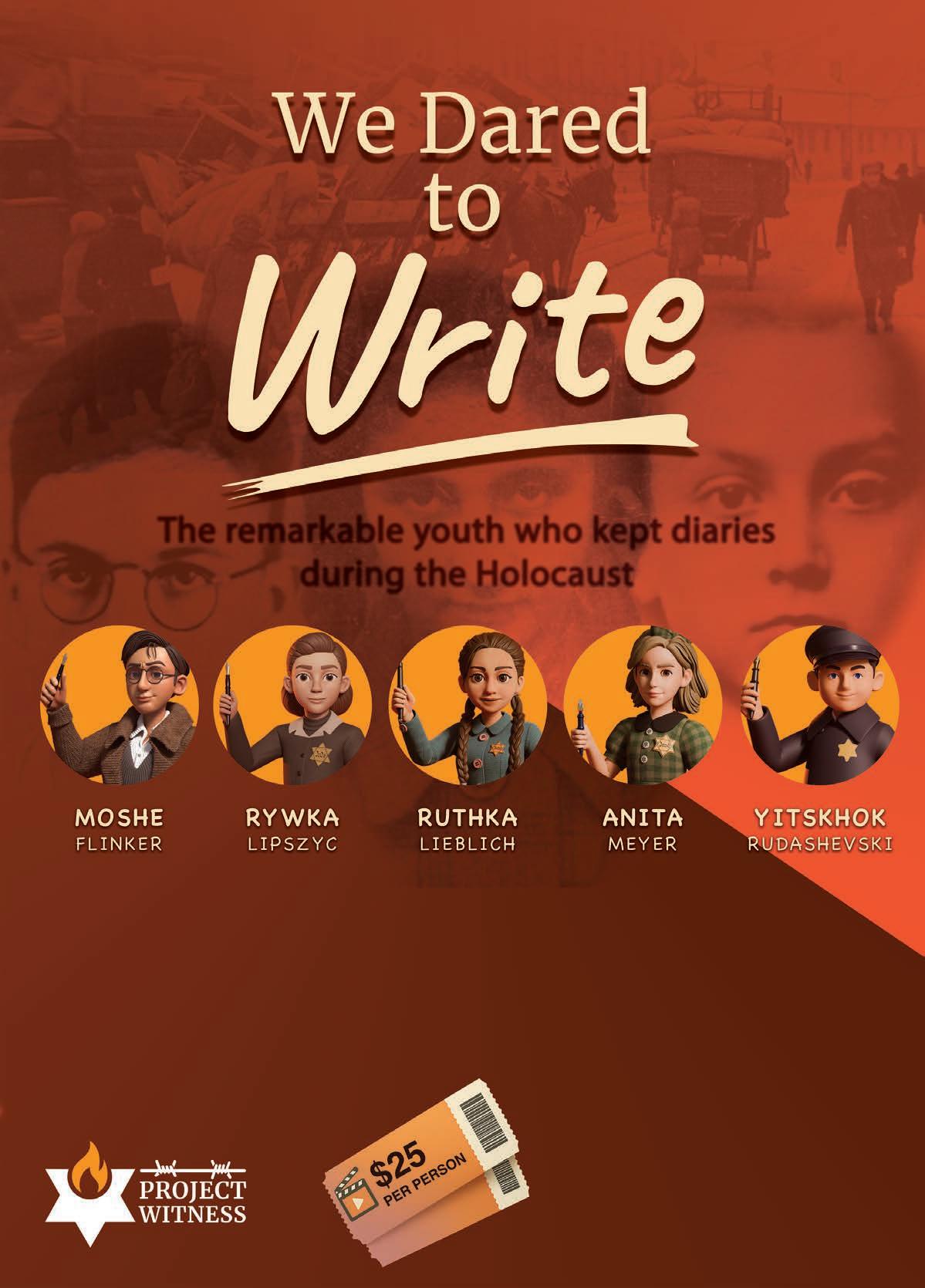

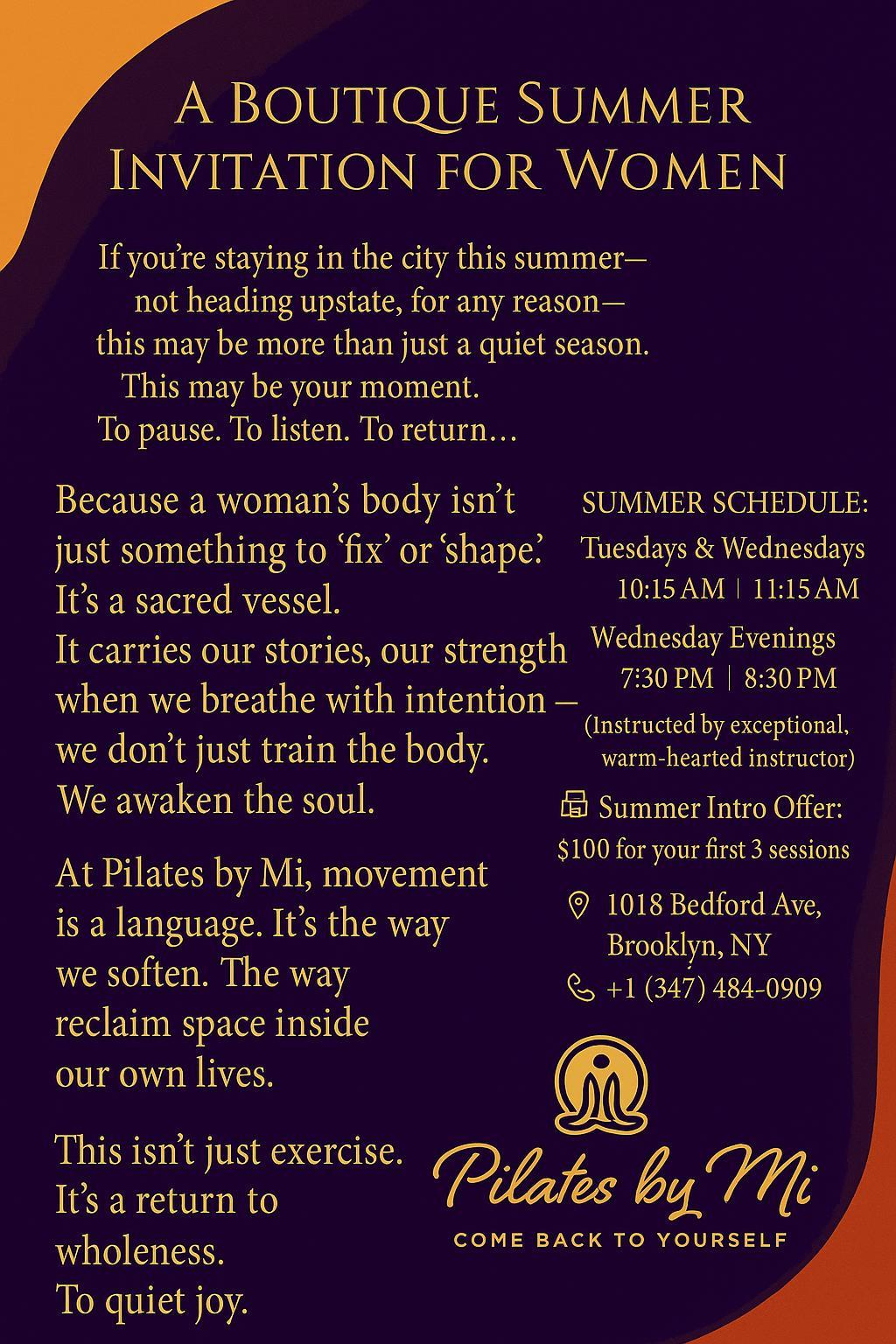




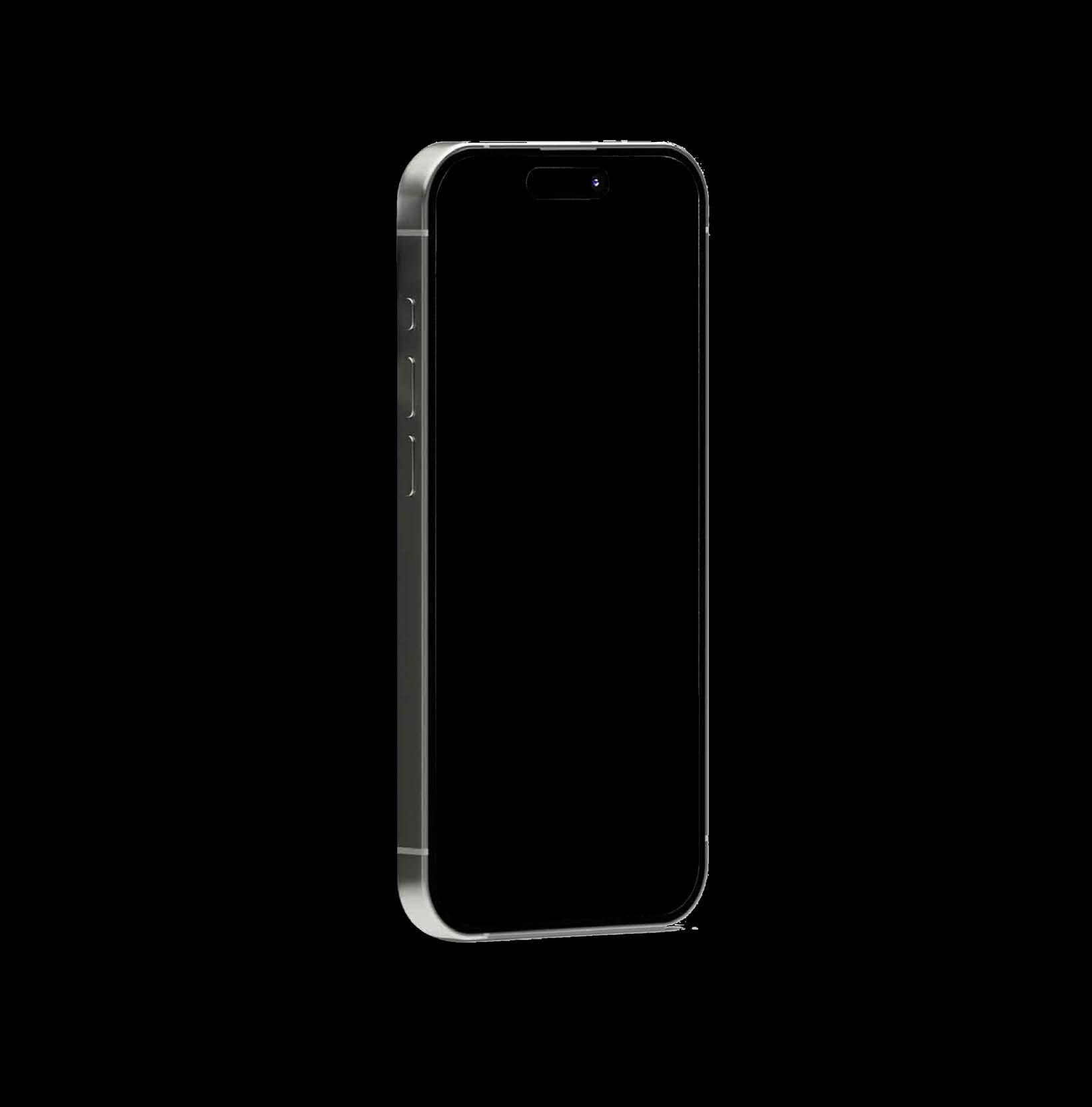



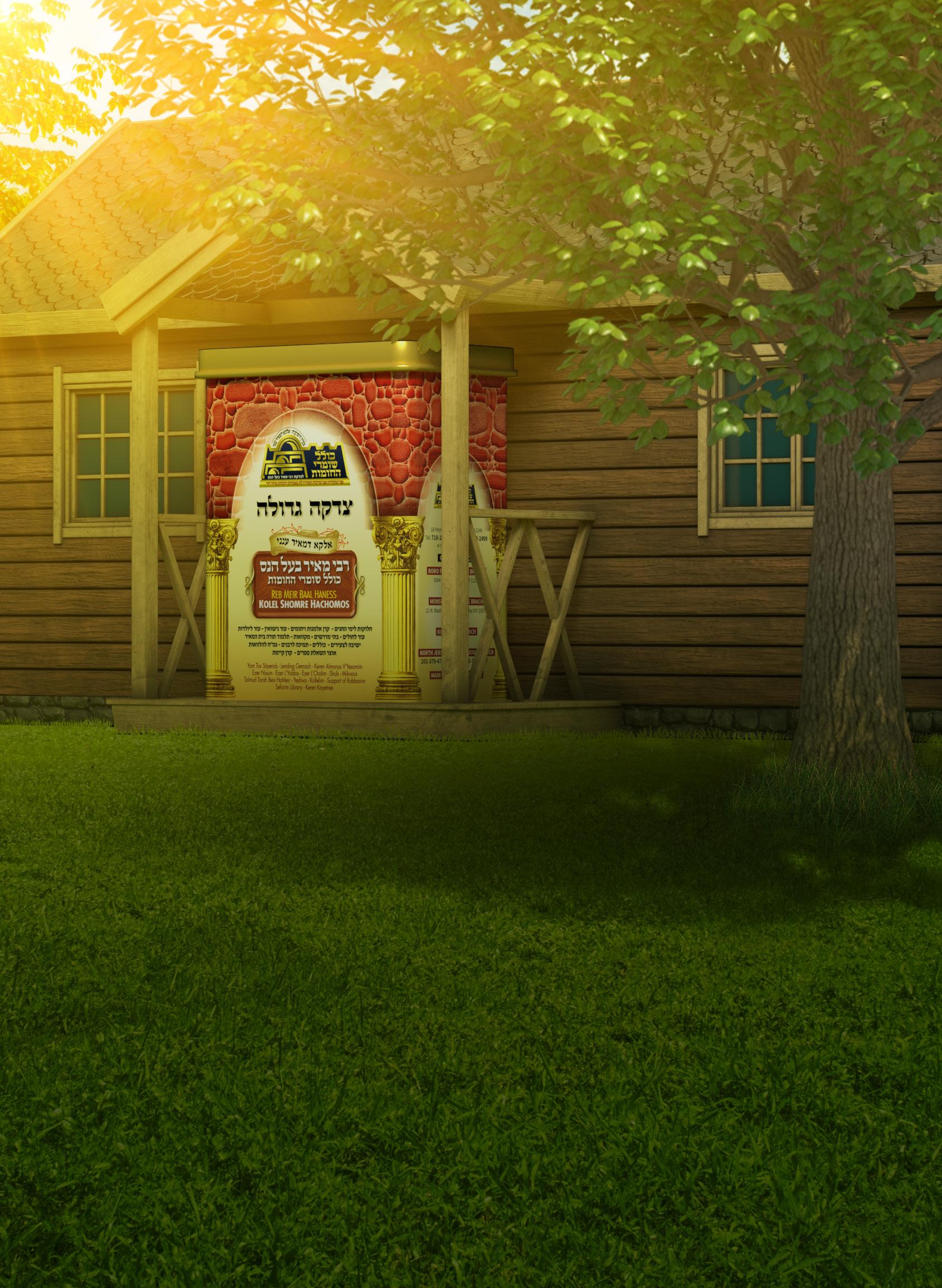






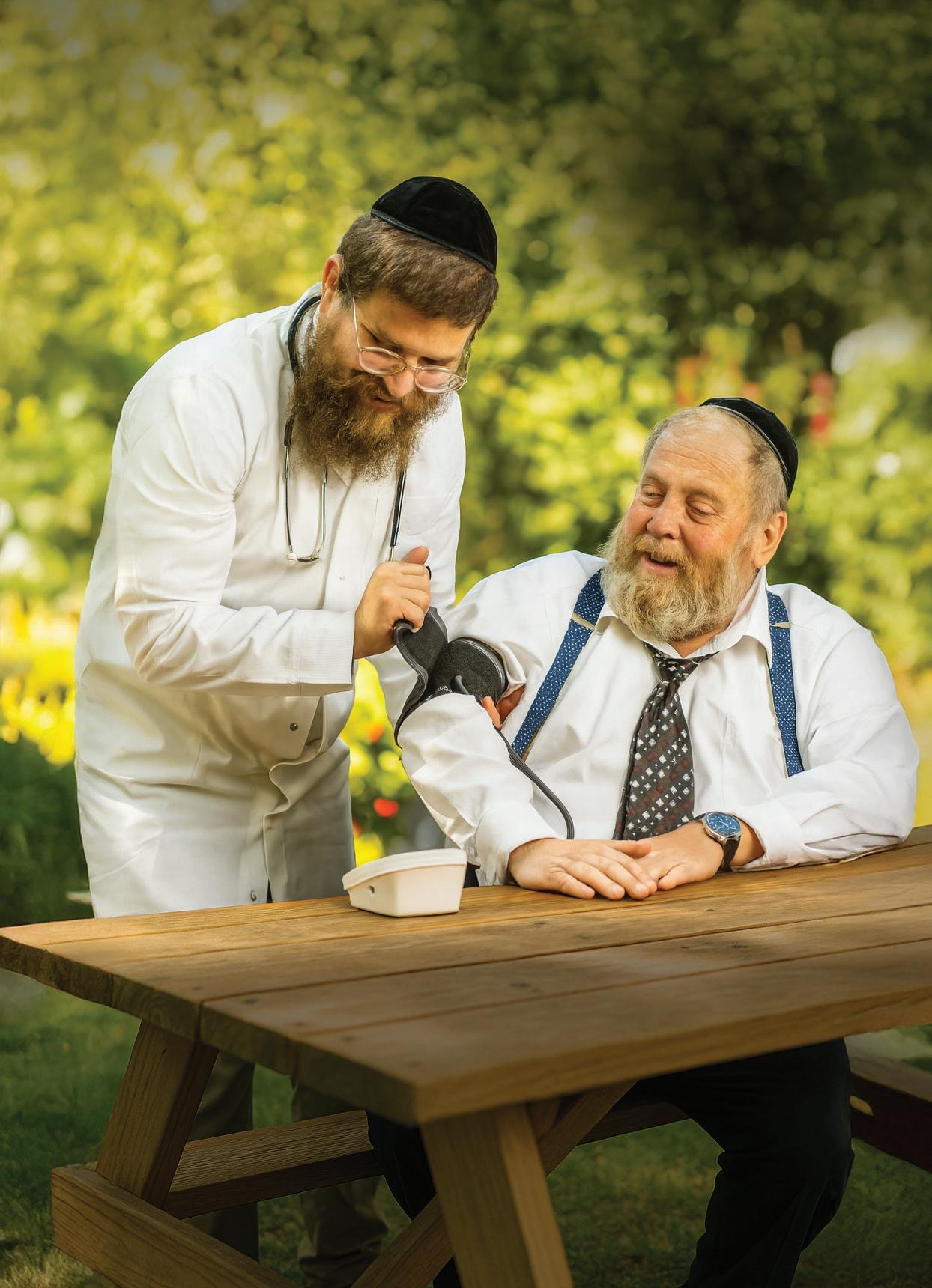

Heatwave Forecast: Wednesday July 16 Till Friday July 25














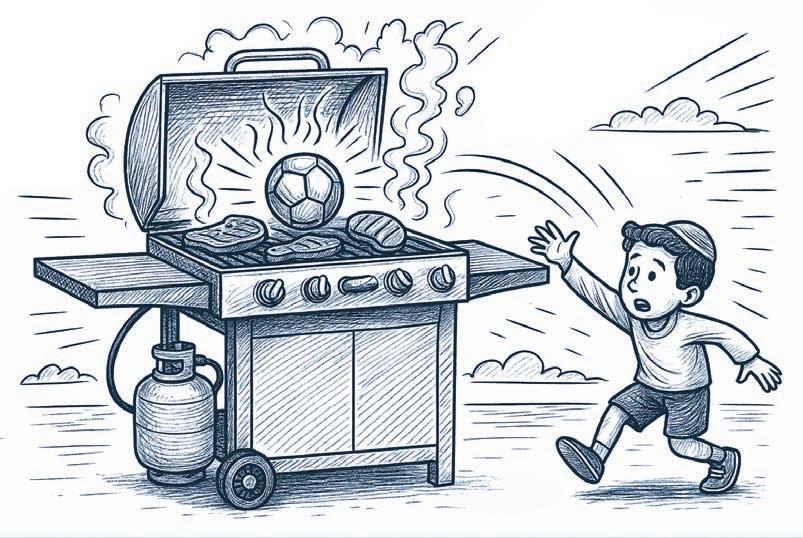










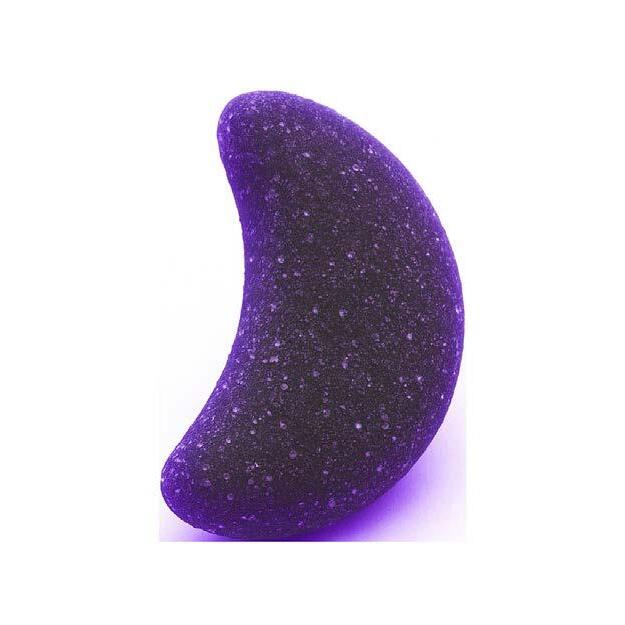
by Zahler
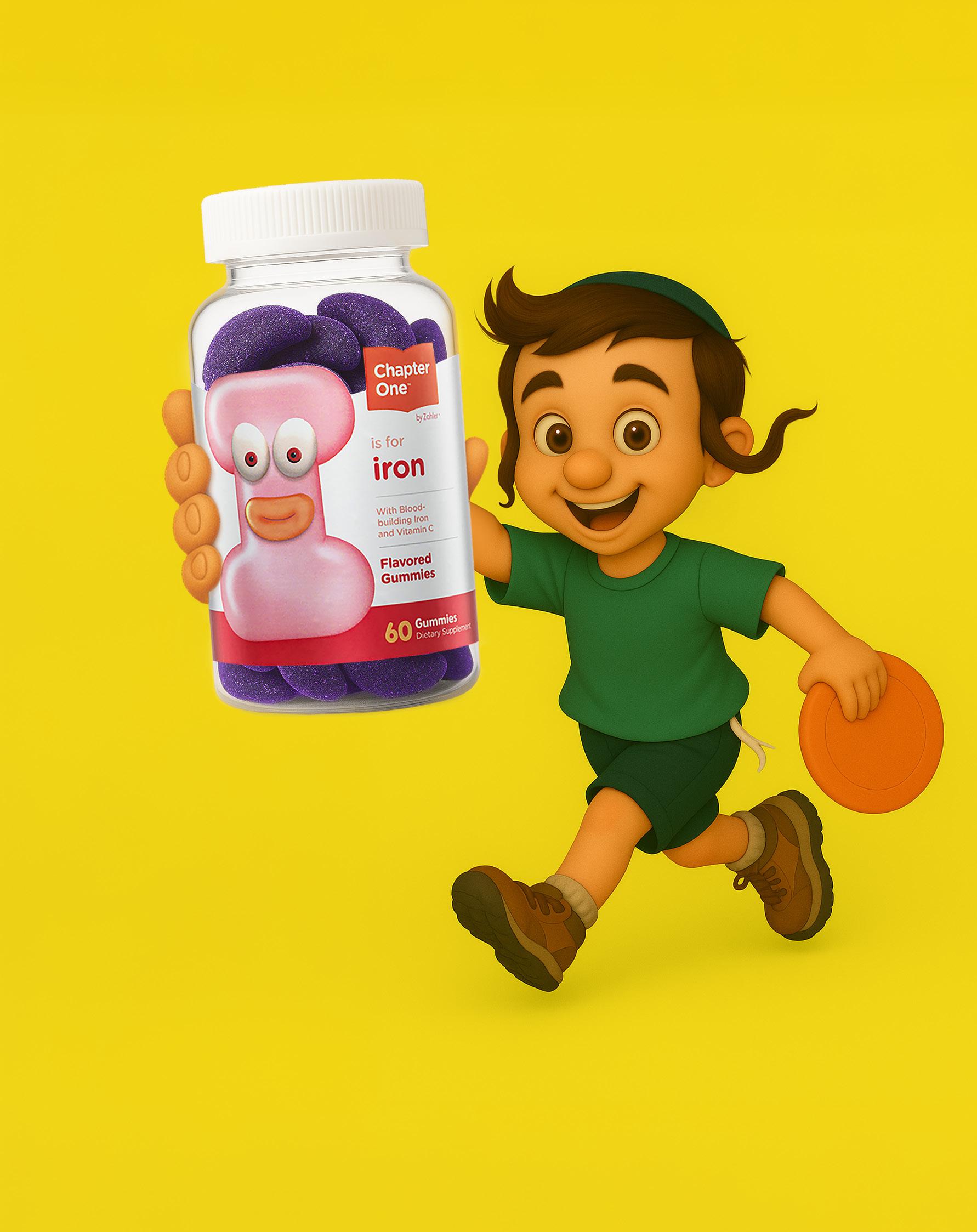
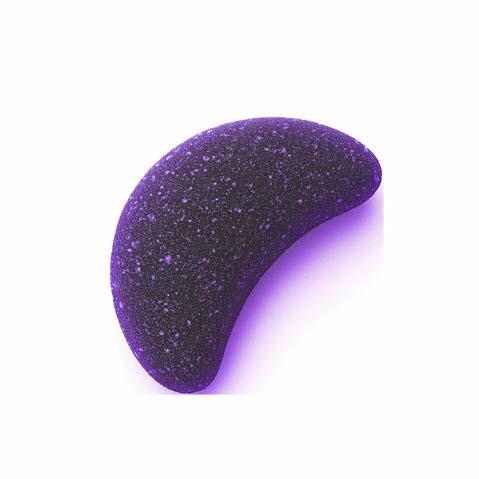










































Heatwave Forecast: Wednesday July 16 Till Friday July 25


























by Zahler






ONE WEEK ONLY
Our sales team will be in the US
July 21 - 28
Now’s your chance to learn everything you ever wanted to know about Jerusalem Sky. Meet in the comfort of your home. Explore floor plans and detailed renderings. Discuss availability, customizations, and financing options.
6 sales slots remain. Book your in-person meeting today: 732.210.6415 | SALES@JERUSALEMSKY.CO.IL

(Re: Farm of Eden, Issue 010)
I was very moved by the article about Rabbi Franklin the farmer. It was extremely well researched and well written. What I appreciated most about it was how clearly his character came through. He is obviously a very unique person, with strength of character, who is using all the gifts Hashem gave him to serve Hashem.
Thank you for introducing us to such special people and for giving us quality reading material week after week.
(Re: The Summer That Changed My Life, Issue 010)

Thank you so much for the amazing stories about the summers that changed writers’ lives forever. My favorite was about the girl in camp who wanted to go to her friend’s vort, and how Hashem answered her tefillos and “proved” to her forever that Hashem is a Shomea Tefillah.
Recently, my daughter was desperately hoping to win a certain raffle. I was pretty pessimistic about her chances… but she won! When



9:358:08


she came home and told me the news, holding the prize in her hands, her face was shining. She said to me, “I never stopped davening!”
Immediately, I thought of the story you printed and told her, “Now you know, for real, forever, that Hashem listens to tefillos, and you should never stop davening.”
Thank you for a beautiful magazine, and uplifting and inspiring stories.
Name Withheld
(Re: A Whale of a Trip, Issue 009)
I really enjoyed your article on Cape May! The way it was written made it fun to read even if you have absolutely no intention of ever going there. The description of how it felt to be on a boat out in the open ocean made me realize how artificially separated we are from nature. When we go to the mountains in the summer, I feel much calmer in so many ways. I wonder if the greater exposure to nature contributes to that effect.
Having been to Cape May myself, I want to mention that the ferry and whale watching do launch from the beach. We went on Chol Hamoed Sukkos, when summer vacation season was over, and the weather on the water was cool enough to call for a light sweater. I think that’s the best way to avoid any tznius issues.
Enjoy!
(Re: Voices From the Deep, Issue 009)
Just a note to let you know that I found Yaakov Astor’s article “Voices From the Deep” to be outstanding! In addition to the fascinating information, I appreciated the perspective on how we can view these sea creatures through the lens of mussar
Thank you for a wonderful read!
Name Withheld
(Re: Panim el Panim, Issues 008–009)
Thank you for the articles in
Issues 8 and 9 that discussed local exercise classes. I am a weekly participant and enjoy the classes tremendously.
I would like to give a shout-out to Mrs. B. Schwartz. She is a special asset to our group, who volunteers her own time to take care of the lunch program. She’s always there with a smile and gracious offers of help and does anything she can to make the group successful.
Thank you so much for a quality read every week!
A Young-At-Heart Senior Citizen
This past week, I had a frightening experience that I feel compelled to share in the hope of raising awareness and possibly helping others avoid the same.
While doing my regular shopping, I was delighted to discover a new brand of corn flakes called Morning Cheers, which is even WIC-approved. Excited, I picked up the honey-nut flavor, as I’ve often enjoyed similar cereals from other brands that typically use almonds.
Unfortunately, I didn’t realize that this particular version is made with peanuts, to which I am severely allergic. The reaction was immediate and extremely serious. Baruch Hashem, I was able to call Hatzolah, whose members arrived within moments.
After two EpiPens, a cortisone shot, a Benadryl injection, and several stressful hours in the emergency room, I am, baruch Hashem, on the mend. But the trauma was real — for me, my husband, my parents and our children, who witnessed it all.
Many consumers assume that “honey-nut” refers to almonds, as it often does with other brands. If you are allergic to peanuts, please doublecheck the ingredient list before purchasing this or similar products.
A Grateful Member of the Community













CONVENTIONS







I serve dessert on Rosh Chodesh and let the children take a treat (either a boxed drink or a chocolate) to school.
I deck the table with pretty dishes and cutlery, and try to make an elegant supper.
Rosh Chodesh is always the day I take my sewing machine out to do some mending... only to realize that I need to put it right back!
Rosh Chodesh is a very special day for us. All the kids get treated with drinks or other special goodies to enjoy during recess, and the boys wear white shirts. I also prepare a mega supper that includes some kind of beef kids specialty and serve ice cream for dessert. Additionally, I try not to do laundry on Rosh Chodesh, only if it’s a must.
On Rosh Chodesh I prepare a more elegant supper than usual, and we make sure to wash and bentch so we shouldn’t miss the opportunity to recite Yaaleh V’yavo. Also, since it is a Yom Tov for women, we don’t wash or iron clothes in addition to not sewing.
Our Rosh Chodesh treat is s’mores that we make in the Betty Crocker.
We usually buy sourdough bread and dips and wash for supper.
I try to serve a special Rosh Chodesh dinner including Hamotzi delicacies, so that everyone should be motivated to wash and bentch

On Rosh Chodesh, I serve supper on china dishes. I also serve a special dessert.
L’kavod Rosh Chodesh, I make the Boba Drinks that were featured in The Monsey View several months ago. Thank you for your great recipes.
I surprise my kids by tucking in a special treat into their briefcases along with a note.
My children all wear white shirts on Rosh Chodesh. Additionally, I usually buy a special treat for them to take to school and serve something nice for dessert.
A special thing I do for myself is that I say Hallel; I usually daven the full Shacharis as well as Mussaf, something that doesn’t happen on a regular basis.
Each Rosh Chodesh, I lovingly bake a fresh homemade cake and send it to Bikur Cholim for it to be delivered to hospital patients to brighten their day with a taste of comfort and care.



I used to be makpid on enjoying something special for Rosh Chodesh, like a cheese danish, acai bowl or any other treat. One night following Rosh Chodesh, I found that I had neglected to daven Hallel. Since then I’ve been careful not to enjoy my treat before Hallel and Mussaf.
In our home, ice cream is a treat reserved specially for Rosh Chodesh. Even my three-year-old knows, instead of asking for ice cream, to ask when Rosh Chodesh is coming up. Generally, we visit the ice cream store, and everybody picks a flavor and a topping. Rosh Chodesh is also one day of the month that I make a special effort to daven the entire Shachris followed by Hallel and Mussaf, a rare treat for this busy working mommy. I often wake up at dawn to be able to fit it in.
I allow each child to pick a treat like an ice cream, slush, danish, chocolate bar or frappe, for up to $3. Occasionally, I also buy a tub of ice cream and serve everyone a filled cone.
I try to bake something quick and easy, like muffins, for dessert. I also take a few minutes to daven Hallel; it’s such a beautiful tefillah!
I say Hallel, of course, and serve something special for supper.
I serve my family’s favorite supper, and the kids get to take a flavored snack for recess (in general, that’s not for weekdays).
The place I work at treats the office staff with a lunch out to celebrate Rosh Chodesh.
In our family there’s an official “Rosh Chodesh Breakfast.” It’s made as follows: Separate an egg, then beat the egg white with salt, and coat two slices of bread with it. Fry the bread slices on one side, and then flip. While the second side gets fried, put the yolk on one slice of bread and a slice of American cheese on the other. Sandwich it and remove excess oil.
I give my kids a sweetened cereal for breakfast as a Rosh Chodesh treat.
When I was a child, my mother used to make jello on Rosh Chodesh. Now, in my own home, I try to put out rolls or a different type of bread on the supper table so that my family can wash and say Yaaleh V’yavo.
On a more spiritual level, I try to find time to daven Hallel. Since I’m a mother of six and I’m at work when the kids are out of the house, that Hallel usually ends up happening with a siddur open on the counter while preparing supper.

My sons wear white shirts, and I try to make a special supper or at least have something special on the table waiting for the children when they come home. If there’s anything special happening or being bought, I usually designate it for Rosh Chodesh.
I love trying new recipes and making elaborate, expensive food, but my schedule and budget don’t allow it on a regular basis, so I save it for Rosh Chodesh. I also make the time to daven a full Shacharis as well as Hallel, unlike most days when there isn’t time for that luxury and I just daven what I can.
We buy a treat for the children or do something special with them. On Rosh Chodesh Tammuz we made popcorn and decorated cupcakes with icing and sprinkles.
My high school teacher (of almost a decade ago) would walk in every Rosh Chodesh with a bag of chocolate for us to enjoy. I have very special memories of that Rosh Chodesh treat, and I’m still hoping to implement something special in my own classroom.























































































In addition to a special dessert, my kids each get to choose a treat from the grocery, like an ice cream pop or chocolate. They look forward to it all month.
My friend and I say the yom l’chodesh of Tehillim each day, so we finish the sefer every month. That’s when we buy a small Rosh Chodesh/Tehillim siyum treat to celebrate!
Rosh Chodesh gets a special dinner, such as steak and homemade fries, along with jello. Growing up, my mother always prepared nice Rosh Chodesh dinners, making it a very special time.
My kids wear white shirts, and I prepare a proper seudah for the family. I bake challah that day and serve it with dips, fish, soup, cholent and sometimes jello compote. (Jello according to the package instructions mixed with a can of fruit mix.) It’s very exciting for my children.
I get to say Hallel (thanks to a dear neighbor who posts a Hallel reminder each Rosh Chodesh). I also make a special supper, which includes some type of Hamotzi (like garlic knots) and fish.
I aim to make something special to eat and bentch on, though that doesn’t always happen. (Trying is halfway there!)
The children get chocolate lebens and a special treat as a snack.
I make something special for supper, and I wear an extra piece of jewelry.

After supper I put out pretzels with melted chocolate and sometimes toppings for the kids to dip and eat.

When there’s no school, I sing Hallel together with the kids. Otherwise we have a special treat like ice cream or doughnuts. I try to coordinate my challah baking as well, if possible, so we can wash on a hot, fresh loaf for supper.
or text
We pop popcorn!
I make time to daven (after all, I don’t do laundry on Rosh Chodesh) and try to dress up. In the summer months, we buy ice cream from the ice cream truck on Rosh Chodesh. In the winter, we get ice cream in a store.










Moshe and Elazar are instructed to count the Yidden age 20 and up. They begin counting each of the Shevatim. The pasuk says, “Eileh bnei Dan l’mishpachosam, l’Shucham” — These are the descendants of Dan according to their families: the families of Shucham ( Bamidbar 26:42).
Rashi says that “Shucham” was Chushim, the one and only son of Dan.
Why does the Torah change his name? If he was known as Chushim, why is he called Shucham here?
THE FELDMANS were gearing up for the bar mitzvah of their oldest son. They finalized the menu with the caterer, picked up the tefillin from the sofer, and the brand-new hat and jacket were waiting in the closet.
But besides the shopping, coordinating and inviting, Mr. Feldman put another task high on his priority list: He took his son to daven at mekomos hakedoshim and arranged for several visits to gedolim so the bar mitzvah boy could receive brachos and hadracha in honor of becoming a full-fledged bar mitzvah.
One evening, Mr. Feldman and his son drove to a different city for one such visit. After a long wait, they finally got to speak with the tzaddik, and they left the room uplifted.
That same night, a friend of Mr. Feldman was marrying off a daughter in that city. He wouldn’t have traveled there just for the wedding, but since they were already in town, Mr. Feldman decided to go and say mazel tov.
The hall was located on the fourth floor, and when they entered the building and made their way to the elevator, they saw a sign announcing that the elevator was out of order.
They looked for the staircase and began climbing. Alongside them was a well-known talmid chacham who was also making his way up.
What an opportunity! Mr. Feldman took the courage to speak up.
“Ah gutten,” he said, “This coming week, my son will become a bar mitzvah. Perhaps the rav can share some words of hadracha?”
The rav smiled warmly. “Nu, nu… We’ll be walking up these stairs together anyway…”
He turned to the bar mitzvah boy and shared a story from his own childhood.
“I grew up in chutz la’aretz,” he began, “and at home, we spoke English. I remember an article I once read way back in one of the English newspapers. It was written by a man who was an expert jockey, or horse racer. Horse racing is a popular sport in America, and this man took part in this sport professionally. He was a top rider, who won many competitions. In his article, he shared the secret to his success.
“When he was a young boy, he wrote, his parents purchased a special helmet for him, to protect his head in case he would fall off the horse while it galloped along the racing track. It wasn’t a regular helmet. Besides covering his entire head, it came down low, all the way to his shoulders. This meant that he could not move his neck or turn his head. There was no way he could twist his head to the right or left; all he could do was look straight ahead.
“The horseback rider explained that his parents wanted to teach him an important message with this helmet. When riding the horse, the young boy was to keep fully focused on what was ahead of him. He shouldn’t — and couldn’t — look to his side to see how his friends were doing. He couldn’t tell where the other racers were up to, and who seemed to be in the lead. They trained him to be fully focused on his task and do as best as he could, regardless of whether the other riders were ahead of him or not.”
Just then, the men reached the fourth floor. The rav turned to the bar mitzvah boy. “Do you understand? We can all learn from this horseback rider. You are now becoming a bochur You’ll be entering yeshivah soon. If you want to succeed in your learning and anything else you may do, you shouldn’t pay any





ARE YOUR CHERISHED ARE YOUR CHERISHED FAMILY RECIPES SCATTERED FAMILY RECIPES SCATTERED AND DISORGANIZED? AND DISORGANIZED? KITCHENKEEPSAKES WILL KITCHENKEEPSAKES WILL PRESERVE YOUR RECIPES. PRESERVE YOUR RECIPES. WE CREATE A BEAUTIFUL WE CREATE A BEAUTIFUL COLLECTION OF ALL YOUR COLLECTION OF ALL YOUR FAMILY RECIPES THAT FAMILY RECIPES THAT SHOWCASES YOUR COOKING SHOWCASES YOUR COOKING LEGACY. SAY GOODBYE TO LEGACY. SAY GOODBYE TO CREASED, HAND WRITTEN CREASED, HAND WRITTEN RECIPE CARDS, AND HELLO RECIPE CARDS, AND HELLO TO INSPIRATION! TO INSPIRATION!
Every one of us should focus on our own horse and our own path
attention to whether your friends are being more or less successful than you. Just stay focused on what you need to do, and do the very best you can. That will be your greatest hatzlacha.”
* * * * *
Of all the Shevatim, Dan had the fewest children — only one son. Not only that, but this one ben yachid was deaf and mute. In contrast, Binyamin had the most children of all his brothers, ten in all. People of that generation may have questioned: What will become of Dan’s shevet, in comparison to the larger shevatim, such as Binyamin’s? What could grow out of one disabled child?
The census tells the outcome: From one ben yachid, Chushim, Dan’s shevet tallied 64,400 men. It was the secondlargest shevet after Shevet Yehuda.
The pasuk in Yeshaya (55:8) says, “Lo machshevosai machshevoseichem, v’lo darcheichem derachai — My thoughts aren’t your thoughts, neither are your ways My ways.” We have no understanding of Hakadosh Baruch Hu’s calculations in his coordination of matters of this world. Not everything is the way it appears to our eyes of flesh and blood. Here you have one ben yachid, a baal mum, who fathered the second-largest shevet. The Torah changes his name from Chushim to Shucham to tell us that his mazel changed.
One must never despair. Those around may have more going for them, but that does not mean they’ll have better results. Every one of us should focus on our own horse and our own path. We should each strap our helmet on tight and not look around at what is going on by others.
One who is fully focused on his own tafkid, with his own talents and capabilities, his personalized circumstances and past, and his particular chinuch and the family Hashem placed him in, can grow to be the greatest he can be.










טריטסערא זיא רעוויירד א
ן’ראפ גרובסמאיליוו ןיא ןראוועג
ןופ סולפנייא ן’רעטנוא ןוויירד
רע טאה ייברעד ןעוו ,לאהאקלא
סראק לאצ א ןיא טכארקעגניירא
ראליעט ןבענ וינעווע טנעק ףיוא טאה טנעדיצניא רעד .טירטס
ענעפאלראפ טליפשעגפא ךיז
רעד ןעוו טכאנ גאטשרענאד
טימ זיא רעוויירד רענעקנורטעגנא טנעק ןראפעגפארא טייקלענש א
רעטרעקראפ רעד ןיא וינעווע
גיטליגדנע טאה רע זיב ,,גנוטכיר
סראק עכילטע ןיא טכארקעגניירא
ףיוא טריקראפ ןעוועג ןענעז עכלעוו .סאג רעד ןופ טייז רעד
טעדנואווראפ ןענעז ןשטנעמ ייווצ
ייז ןשיווצ ,טאטלוזער ןיא ןראוועג
ןסעזעג זיא רעכלעוו דיא א ךיוא
רעד ןעוו ראק רעטריקראפ ןייז ןיא
יד .טליפשעגפא ךיז טאה טנעדיצניא
ןראוועג טלדנאהאב ןענעז ןשטנעמ
ןעמוקעג ןענעז עכלעוו הלצה ךרוד
ןענעז ןוא ,ענעצס רעד וצ ןראפ וצ לאטיפש ןיא ןראוועג טריפעגניירא
ןפלעה םורא יוזא ןוא ןטכיראב דלאב .רעכערבראפ יד ןופ


קילבופ ן’טימ ןטאראב וצ ךיז טעטכילפראפ טשינ .גנודלעמ עגידרעירפ ןייק ןבעג טשינ ףראד ןוא
עיצאטראפסנארט ןייז ןוא סמעדע ראיעמ ןייגסיואראפ ןענעק דניצא ןלעוו טנעמטראפעד
םענופ טייהנדירפוצ רעד וצ ,רענעלפ ערעייז טימ .רוביצ ןשימייה טאה ןטנעדיצניא עלופראפעג עכילטע ךאנ“
יד וצ טרעהעגוצ ךיז עיצארטסינימדא סמעדע יד טקורעגסיואראפ
ןריציפידאמ וצ טכער יד טשינ טאה ראיעמ רעד וצ ’ןיעל קייב דעטקעטארפ’ א ןופ עיניל קייב יד ענעגייא יד ףיוא ’ןיעל
ךיז ןעמוק קורד םוצ גידנעייג
רעראמטאס רעטנזיוט םאזוצ טיילסטפעשעג ןוא םיתב ילעב
יסרושזד וינ םעניא ,רעטנעצ ןאשיזאפסקע
ןטלאהעגפא טרעוו’ס ואוו
זיא סאוו אפסקע עגיזיר יד
טיילסענזיב ןפלעה וצ טליצעג
ן’כרוד סענזיב רעייז ןעיובפיוא סעסיוורעס ערעייז ןלעטשראפ
א זיא אפסקע יד .ןטקודארפ ןוא
ןוא דלעפ סענזיב םעניא רענאיפ סיורא ןעמוק עטגילייטאב יד

Just like Bubby baked ‘em

Fresh on the shelf at a grocery near you.


On your way up to the Catskills, stop by for your weekly shopping—or grab a fresh meal from our takeout section.
Monsey Bingo is conveniently located right next to the Marketplace Mincha Area.
WE HAVE A FULL VARIETY OF Fresh Flowers Freshly Baked Goods Nuts & Dried Fruits Sushi Bar Hot Leil Shishi Buffet And Much More
עכילנעוועגמוא ןא א ןוא גנילירפ עמעראוו
ןאזעס רעמוז עסייה עירפ
א וצ טרעייטשייב ןבאה גייטשפיוא רעדנטיידאב םור יסנעשזדריומע ןיא
רעלעטיפש רעביא ןכוזאב ,טיעטס קראי וינ ןיא
עכלעוו ןסיב קיט בילוצ
ערעווש ןכאזרואראפ
םיריוטקאד .ןעמאטפמיס
ייז זא טעטכיראב ןבאה
ןיא ןטנעיצאפ ןעזעג ןבאה ,ןדנאטשוצ ערעווש ראג
טימ קנארק רעייז גידנעייז
ןוא קורד טולב עגירדינ
ןסיב יד בילוצ גנודניצטנא .סקיט ןופ
ךיז ןעניפעג סקיט יד
רעשרעה ואוו רעטרע ןיא
א זיא ןוא ,ךיז ןעיירד
ראפ גראז רערעדנוזאב
ןלייוו עכלעוו ןשטנעמ .רוטאנ ןופ סיוש ןיא
ןזיוועגנא ןרעוו ןרעטלע
ערעייז ןכוזוצרעטנוא
יד יצ ,טכאנ עדעי רעדניק ןבאה עגידעכירק עניילק
טפאכעגפיורא טשינ ךיז
ןגאז ךיוא יוו .ייז ףיוא ביוא זא םיריוטקאד






























?אד






























































565,000 150,000 4,500
162



Boro Park Location
• 1460 56th Street
• 1520 48th Street
• 145 Rutledge Street
• 104 Ross Street








ייז ןבָאה תמא ןַא סאוו רעייז .טשַאררעביא ןייז טפרַאדעג
ןענעז רעביירש-סגנוטייצ ךַאסַא רעד ןופ ןרָאוועג טסולפנייאַאב
שטָאכ ןוא ,עדנַאגָאפארפ רעשיצאנ
עכלעזַא ןעוועג ךיוא ןענעז סע -יטנַא ןבירשעג ןבָאה סָאוו סרעביירש
רעדייא גנַאל רעייז טרעיודעג






























CHANIE SPIRA

Perela makes a surprise visit to Kaily and her mother, only to discover that her mother has been hospitalized and Kaily’s shidduch was cancelled.
There was pain, sure. Intolerable pain screaming from every part of her body. But it was Roiza’s inability to think that was the hardest to accept.
She picked up her hand to soothe the throbbing somewhere deep inside her head, only to scream in pain. Her wrist was on fire, her brain was on fire. And she was to blame. She didn’t know why or how, but she knew she had messed up.
“Shh… shh…” It was Kaily’s voice. “Do you want more painkillers? Do you want your sweater? I just brought it from the house.”
“K…Kaily.” Roiza opened her eyes and tried lifting her head.
Kaily! That was it. The thought she was fishing for definitely had Kaily in it. But she couldn’t finish the thought. There was no letup from the horrible hammering in her forehead.
“Kaily,” Roiza whispered again, desperate to locate the memory. There was something important she needed
to tell Kaily.
She heard Kaily requesting more morphine from the nurse. She wanted to stop her because the morphine would only make it harder for her to think.
Kaily was supposed to go somewhere… with someone. “Was he n… nice?” she finally asked.
There was an intake of breath. “He?” Kaily asked.
Roiza nodded.
“Yes… he — he was very nice,” Kaily said quietly. A pause. “You knew?”
Roiza smiled. Of course she knew. The who and the what were somewhat foggy. But of course she knew.
She nodded slowly, finally allowing the darkness to swallow her. * * * * *
Kaily followed the nurse’s careful movements as she injected more morphine into the IV. Her mother winced once more, opened her eyes for a minute, and then slowly drifted off again.
SO HER MOTHER KNEW… SOMETHING. HOW HAD SHE GUESSED? NOT THAT IT MATTERED ANYMORE. MORDECHAI NEWMAN PROBABLY NEVER WANTED TO HEAR HER NAME AGAIN

So her mother knew… something. How had she guessed? Not that it mattered anymore. Mordechai Newman probably never wanted to hear her name again.
She was too tired to think now. Another sunless December morning was already dawning through the shatterproof glass of the hospital window, and she’d barely closed her eyes. But every time she tried dozing off, an image of Perela’s shocked face filled her mind.
KAILY BUZZED FOR THE NURSE. “MY MOTHER IS REPEATING THE SAME QUESTION, ALMOST WORD FOR WORD!” SHE SAID, TOO LOUDLY FOR SIX A.M.
An overwhelming emptiness filled Kaily as she tried to shift in the hard chair. It was the emptiness that came from carrying months and months of unsaid words and finally just saying it. With no frills and no niceties to cushion the anger that she’d unleashed on her sister.
But the hollowness she was feeling wasn’t relief per se. It was more of a weightlessness that emptied her of all thought and feeling. The problem with emptiness was that the vacuum was soon filled with guilt. As much as she’d spoken the truth, Perela was her only sister, and she couldn’t afford to fight with her. Was it Perela’s fault that she’d hit a breaking point? What was it about her sister that had made her explode like that?
Was it because when she saw Perela, the feelings of loneliness she’d felt, sitting at the frost-bitten fountain outside the community center, had come rushing back? The same feelings that had made her say yes to the shadchan?
Kaily shifted again. Her mother moaned.
“Shh…” Kaily whispered automatically.
“K…Kaily,” her mother said.
Kaily forced her eyes open. “Yes, Mommy?”
“Was… he nice?”
Again. Kaily inhaled. Helplessly, she just said, “Yes. He was.”
Her mother smiled slightly and closed her eyes again.
Kaily buzzed for the nurse. “My mother is repeating the same question, almost word for word!” she said, too loudly for six a.m.
The nurse nodded. “It’s completely normal,” she reassured her. “The fall probably impacted her short-term memory, and she’s a bit confused. We see this all the time, especially in elderly patients. You’ll see, she’ll feel so much better tomorrow. Just keep answering her questions.”
Sure. Sure.
“K…Kaily...” Her mother’s stuttering began again. “W… was he nice?”
“Yes, Ma. He was very, very nice.” He really was nice. The voicemail the shadchan had forwarded had shown him to be compassionate and thoughtful.
She tried dozing until the doctors’ morning rounds, but it was no use. Finally the doctor arrived, and she listened to him tell her that the brain heals and to give it time. He also spoke about a repeat CT scan to check on the brain bleed.
“For now, don’t push her. Her brain suffered a huge trauma, and she hurt her body in the fall. We’ll talk again tomorrow.”
After the doctor left, Kaily finally gave up on sleep and went to wash up a bit. She sent her siblings an update. Mom-
my is in pain. She’s sleeping and a bit confused
By the time she finished davening and grabbing a bite from the Bikur Cholim room, it was nine-thirty. Eli and Perela were supposed to come at ten so she could go home and catch a few hours of sleep.
She wished she could escape without meeting her sister.
“K… Kaily,” her mother murmured from the bed.
Please, please do not ask if he was nice, Kaily prayed.
“D… did he like the…?” Her voice trailed off as Roiza searched for an elusive word. “The, uh… the diamonds?”
“Diamonds?” Kaily echoed. She had no clue what her mother was talking about.
Her mother shook her head. “N… necklace,” she finally said, satisfied.
Still clueless, Kaily nodded emphatically.
Her mother relaxed. “W… wear it in good health,” she said.
Not all sleep was created equal.
Kaily woke up when her alarm rang without any memory of having fallen asleep. It took her a moment to remember where she was and why she had slept so deeply.
She staggered out of bed.
As sleepy as she was, she knew she had to hurry. Eli had to leave in time for Mincha, and Perela had her holy buses to come home to. Especially after such a long absence from home.
She had a list somewhere of all the odds and ends she had forgotten to collect last night.
She fished in her pocket and found the crumpled list. Soft snood, check. Massaging lotion, check. Grey sweater… should be in the closet.
Kaily opened her mother’s closet and located the sweater. It was hanging next to an unfamiliar, crisp dress bag with Chinese words.
She didn’t remember the bag being there before. Curiously, she unzipped the bag. The zipper snagged on a bead. She carefully separated the two and removed a magnificent gown.
A card fluttered to the floor.
Dear Kaily,
For being my big sister and role model. Your care for Mommy is something I can never truly thank you for. May our family only share simchas
Love,
Perela





















KAILY LONGED TO TRY ON THE GOWN. INSTEAD, SHE SLIPPED IT GENTLY BACK INTO THE DRESS BAG AND JUST STARED AT IT WITH TEARS ROLLING DOWN HER CHEEKS
Perela?!
Kaily held up the dress in front of her, tears springing to her eyes.
The gown was made of a black raw silk with delicate beading heavier around the neckline and graduating toward the shoulder. Some colored stones were strategically scattered throughout the beading. The lantern sleeve and the detailed seams completed the dream dress.
And she’d yelled at Perela.
Kaily longed to try on the gown. Instead, she slipped it gently back into the dress bag and just stared at it with tears rolling down her cheeks.
A text from Eli asking if she was awake prodded her to keep moving.
She left the garment bag on the bed and went to get her mother’s pillow. It was much more comfortable than a hospital pillow, and her mother could use all the comfort she could get. As she stepped forward to grab the pillow, her foot came down on something hard protruding from under the dust ruffle.
She bent down and picked up a box. Hmmm… a jewelry box she recognized.
With a card.
For the second time in five minutes, Kaily opened a card that turned her world on end.
To My Dearest Daughter Kaily,
May you always see and believe what a rare gem you are. And may you be zoche to a life filled with simcha, bracha and connection.
Love, Mommy
P.S. We’ll get Bina something else.
* * * * *
Five minutes later, Kaily was wearing an exquisite Zimmerman gown and a tennis diamond necklace. She smoothed her sheitel and reached for the bronzer, still lying on the vanity counter from yesterday. Then she stood in front of the full-length mirror and stared at her reflection. Her mother was still in the hospital.
Her shidduch was still over.
But she was a lucky woman — dressed in fine silk and diamonds. Ensconced in love and family.
TO BE CONTINUED…























































C.G. HOFFMAN
Taking a trip to Woodridge is like going on a strange, lopsided time-travel trip, where much is the same, yet so much is different. Parts of Woodridge seem frozen in time and reflect over 100 years of Jewish life in Woodridge.
The beautiful shul, Congregation Ohave Shalom, was built in 1930, when it broke off from an even older shul that was established in 1903. (The congregation split from Anshei Centreville because of a dispute among the original congregants about shechitah. Eventually, the original kehillah rejoined Ohave Shalom.) The beautiful brick building features original, gorgeous stained glass windows and has been a silent witness to generations of change within the Jewish community. It reflects the growth, decline and then rebirth of the Jewish Catskills, and the kehillah is supremely proud of the fact that since its inception over 100 years ago, they haven’t missed a single minyan
Woodridge, then called Centreville, was home to a robust Jewish community of dairy farmers, egg farmers and hotel proprietors. The original shul was founded by shochtim who provided the local hotel industry with kosher meat. In its heyday in the 1950s, Woodridge was a flourishing town containing three hardware stores, three clothing stores, shoe stores, dry cleaners, dentists, liquor stores, butcher shops and many more shops lining the main street, Broadway.
Centreville was renamed
“Woodridge” by a few good Jewish business heads who were trying to attract more summer vacationers. They figured renaming the town to something that evoked the rural mountain spot that vacationers were searching for would entice people to come — and come they did. By the 1950s, Woodridge was home to 50 hotels and 39 bungalow colonies. Among them were the Hotel Israel, which advertised itself as a “Beautiful Modern hotel. All rooms heated and with bath. Sabbath and Kashruth strictly observed.”


The Lake House Hotel was a kosher, but not very frum, resort when it opened in the 1920s. It was bought by frum owners in the 1980s, and for years was a quiet vacation spot for older vacationers. (I remember visiting my grandparents there one Pesach. It was full of older couples going for quiet strolls; no screaming children running back and forth.) It went through many iterations until it became the Lake House Hotel of today, a beautiful and comfortable vacation spot for frum families.

Many other summer communities have also been built on the grounds of old Borscht Belt hotels. Rosemond Terrace, for instance, has been built near the site of the Rosemond Hotel. The Rosemond Hotel was run by the Schurek family, and in the 1960s boasted of a “filtered pool” and a “professional day camp.”
One of the most historic Torah centers of the Catskills is Camp Morris. Founded by Rav Yitzchok Hutner, zt”l, in the 1940s, he intended it to be a summer haven for the bochurim, where they could learn undisturbed in the serene atmosphere of the country. The camp has grown to enormous proportions and by now boasts five swimming pools, 30 shiur rooms, and serves up 3,500 portions of food every day!
Today, Woodridge looks much the same and a whole lot different. It still contains a year-round population consisting mostly of aging residents, but today’s
Woodridge has grown exponentially. The town has been revitalized by the influx of summer home buyers, since many now make the trip up to the Catskills during the year too.
Prominent among the year-round residents is Rabbi Yitzchok Lebowitz, shlit”a, Gaavad Khal Yereim in Woodridge, whose shul is open every day and every Shabbos, on 25 Highland Avenue. Buy-Rite Supermarket, in the center of town, is open all year round and is always ready to serve winter visitors.
One of the oldest continually occupied bungalow colonies is Giti Gardens. Adjoining Tomer Devorah Camp, the sprawling colony has played summer host to four generations. Malky, a resident, says, “Many of the women here came as children, and now they themselves are bubbies!”
Tomer Devorah camp, too, has gone through many iterations. For years the camp remained unchanged


(and the campers took a strange sort of pride in how old and run-down it was), but the crumbling buildings of my childhood memories are now consigned to the dustbins of history. Much of the camp has been rebuilt and revamped, and the grounds now contain beautiful and modern accommodations.
What has changed in recent years is the shopping. Country-goers of old would depend on bakery trucks and fruit trucks for their food, with an occasional jaunt to town (on foot) for a much dreamedof slice of pizza. Feller’s Kosher Pizza has been serving up campers and visitors with pizza for over 40 years. After a July 4 fire destroyed their premises in 2010, they moved to a new location close to the old one.
Today, Woodridge and the surrounding towns all spill into Center One, a fully outfitted shopping district. The large supermarket sells everything from groceries to fish (Ossie’s) to baked goods (Shloimy’s) to sushi. Within the strip, you can choose from a milchig restaurant or fleishig takeout, and buy things from jewelry to seforim
In the middle of town, on the main street, what used to be a depressing strip of shuttered stores has now been somewhat revived by many kosher stores opening up. There are pizza shops, a bagel shop, Patis Bakery and Bucket, a fleishig takeout.
Woodridge is a particularly pretty spot in the mountains. The residents take great pride in their
town’s beauty and take care of their town’s scenic spots. William Krieger Memorial Park is a beautiful, large park, with lots of grassy fields and areas for ball playing, as well as a perennial kids’ favorite: a WWIIera Blue Angels airplane. The picnic tables are an ideal place to share a Visiting Day lunch, and there is ample parking. Be aware that the park officially closes at sundown.
There are many trails for hiking and biking, although some locals caution that it’s very easy to get lost, so do your due diligence before you head out. Katrina Falls is a lovely spot with dramatic waterfalls, and is perfect for a visit with the kids.
Woodridge has seen many sunrises and sunsets, a waxing and waning of Jewish life. It has seen hopeful immigrants arriving from the alte heim only to encounter the same old prejudices they faced back home. They fought back by opening their own places, and nurturing them until they flourished, only to see a new generation uninterested in perpetuating their parents’ struggles.
With the descent of the old, the new has arisen, and Woodridge is now flourishing with frum residents who flock to Woodridge for their summer vacations but do not compromise one iota of their values. Keeping kosher and leading a heimish lifestyle isn’t the uphill struggle previous generations faced. With the plethora of amenities now available, the challenge is in not getting too comfortable, and remembering to infuse even the most luxurious vacation with purpose.




Dr. Phil Cynanom DPM at Parcare combines world-class podiatric care with patient-first treatment.
FOR FEET THAT ARE FEELING LESS THAN FABULOUS. MON: 11-7 -

Country Cottages
Florida Bungalows
Giti Gardens
Greenwalds
Highland Park
Lakewood Cottages
Linmore Estates
Lorraine
Maplewood Estates
Menorah
Mesorah Woods
Neustadt
Olympic Hill
Regency Estates
River Valley
Riverside Estates
Camp Morris Shul
40 E Pond Road, Woodridge, NY 12789
Ohave Shalom (Woodridge Shul)
14 Maurice Rose Street, Woodridge, NY 12789
Congregation Tefilas Yeshurim
5 Shul Lane, Woodridge, NY 12789
Cong. Khal Yereim of Woodridge
25 Highland Avenue, Woodridge, NY 12789
ODA
6 Dairyland Road, Woodridge, NY 12789
Rosemond Terrace
Royal Estates
Satmar Kollel Country
Village Park
Vitreale Estates
Whispering Woods
Woodlake Village
Woodridge Estates
The Bucket
4 Green Avenue, Woodridge, NY 12789
Buy-Rite Supermarket
13 Greenfield Road, Woodridge, NY 12789
Chezky’s Pizza
18 Green Avenue, Woodridge, NY 12789
Crunchies at Center One
13 Green Avenue, Woodridge, NY 12789
Honeydew Supermarket
7 Greenfield Road, Woodridge, NY 12789
Motti’s Kosher Bagels & Pizza
6 Broadway, Woodridge, NY 12789
Patis Bakery
13 Broadway, Woodridge, NY 12789
That Sushi Spot
14 Green Avenue, Woodridge, NY 12789
Tuscany Pizzeria
13 Greenfield Road, Woodridge, NY 12789












There’s something so appealing about a light fish dinner on a hot summer night.

Change things up with this fun, kid-friendly flounder that’s crisp and full of flavor!
2 lb. flounder
1 egg
1 (3 oz.) packet ramen noodles, lightly crushed
½ cup corn flake crumbs
1 spice packet from the noodles
½ tsp. oregano
½ tsp. garlic powder
Generous pinch of salt
½ cup flour
DIRECTIONS
1. Preheat the oven to 350°. Line and grease a large baking pan.
2. Pat the fish dry.
3. Crack the egg into a bowl, and scramble lightly.
4. On a large flat plate, mix the crushed ramen noodles, corn flake crumbs and spices.
5. Place the flour on another plate.
6. Dip the fish first in the flour, shaking off excess. Then dip in egg, and finally, in the ramencrumb mix.
7. Place in the pan, and spray generously with oil.
8. Bake for 20 to 25 minutes until the fish is golden and flakes easily with a fork.
Note: Alternatively, the flounder fish can be fried for several minutes on each side until the fish is golden and flakes easily with a fork.



This is an elegant and refreshing meal in one. For a superior oven sear, use a metal pan to bake the sea bass.
2 lb. sea bass
2 T. olive oil
2 cloves garlic, minced
1 tsp. parsley
1 tsp. oregano
Salt and pepper, to taste
BBQ TACOROOS SALAD
8 oz. baby bella mushrooms, cleaned and sliced
5 oz. salad greens
½ red onion, thinly sliced
1 avocado, cubed
Handful of Gefen Sweet BBQ Tacoroos
SWEET BALSAMIC VINAIGRETTE
⅓ cup olive oil
2 T. balsamic vinegar
2 T. honey
2 tsp. mustard
1 clove garlic, minced
Salt and pepper, to taste

DIRECTIONS
1. Preheat the oven to 400°. Line a baking pan with parchment paper.
2. Pat the sea bass dry, and season with the oil and spices on all sides. Place on the prepared pan.
3. Bake the fish for 15 to 20 minutes, until it flakes easily with a fork.
Note: Alternatively, you can pan-sear the sea bass with butter. Start with the skin side down for 4 minutes over medium heat, then sear the other three sides for 2 minutes each or until the fish flakes easily with a fork.
4. Toss the mushrooms with some olive oil, salt and pepper, and spread onto a separate pan.
5. Bake the mushrooms for 25 to 30 minutes.
6. Toss the vegetables in a bowl.
7. Place all of the vinaigrette ingredients in a container, and shake vigorously to combine.
8. To serve, plate the salad, and drizzle with dressing.
9. Add a handful of Tacoroos, and top with the sea bass.

This recipe works great with any fish. I’ve enjoyed it with flounder and salmon.
INGREDIENTS
2 lb. fish of choice (I used flounder)
CRUMB MIXTURE
½ cup corn flake crumbs
½ cup macadamia nuts, crushed
½ tsp. oregano
½ tsp. garlic powder
Generous pinch of salt
HONEY-SOY DRESSING
2 T. soy sauce
1 clove garlic, crushed
¼ cup honey
3 T. mustard
3 T. oil
DIRECTIONS
1. Preheat the oven to 350°. Line and grease a large baking pan.
2. Pat the flounder dry.
3. In a bowl, mix the ingredients for the honeysoy dressing until combined.
4. On a flat, shallow plate, combine the crumb mixture.

5. Dip the flounder first in the honey-soy dressing, and then in the macadamia-crumb mixture.
6. Place on the prepared pan. Spray generously with oil.
7. Bake for 20 to 25 minutes, until the fish flakes easily with a fork.


subscribe@einyyeshuah.org





by calling Azamru tours and travel will take care of your entire trip from renting apartments booking hotels drivers cell phones etc. and everything in between. Azamru tours for all your travel needs.
› Apartments / Villas in Yerushalayim & in Tzfas › Hotels
› Customized trip planning
› Vip services in airport › with cars, vans, mini bus › Travel Insurance › Heimishe American style food delivered to your apt.


we Yidden generally put one meaning to World War II: the Holocaust, the raging fire that tore six million of our people from this world, leaving a small, weakened population in the embers that were left.
Most of our grandparents lost their families in the war, and the generations that followed remained framed in the context of survival. Where did your grandparents come from? Where did they go after the war? Do you have great-grandparents?
Today, great-grandparents are a wonderful fact of life, but I never knew mine. Great-grandparents were from before. All we knew about them were the legacies they left behind — and their names, which we bestow on new members of the family still today.
But beyond our personal histories, the war also affected other countries, even if not to the same degree. What was the war like for Americans? For the Swiss? For the English?
Here we’ll take a look at how England experienced the war, both in general, and in terms of our People.

Note: Most of the information used in this feature was collected during the research stages of two books: Following the Piper (Hamodia Treasures, 2024) and its sequel Land Girls for the Win (coming soon by Israel Bookshop Publications). Therefore, the research focuses on the home front over the battlefront, and the Women’s Land Army over other services.

In September 1939, Germany invaded Poland, breaking a non-aggression pact they’d signed five years earlier. In response, England and France declared war on Germany, triggering the start of the war.
As soon as war was declared, England passed the National Service Act, which meant that all men ages 18 to 41 had to register for service. Those involved in industries deemed essential (farming, medicine, engineering and others) were often exempted from service, as were those who were medically unfit.
But three months later, a second act was passed. This one required both older men to register for service, as well as all unmarried women between the ages of 20 and 30.
Propaganda played a huge role when it came to registering. Those avoiding what was considered an honor and a duty were viewed with scorn, and it was embarrassing to “get away with it,” even when people had perfectly valid reasons or excuses not to sign up.
Men had it worse than women. When seemingly fit men were seen on English streets, they’d be verbally attacked. Why weren’t they on the front? Why weren’t they doing their duty?
The lowest blow was to receive a white feather. Its meaning was: You’re a coward, and we know it.


Women had plenty of options to choose from. The first option was joining military auxiliary services. In this capacity, women primarily joined either the air force (they were known as WAAFs, which stood for Women’s Auxiliary Air Force), the navy (these women were known as Wrens, for Women’s Royal Navy Service), or the ATS, which was a division of the army.


These women prided themselves for working in real uniform, and while they didn’t actually fight, they assisted in many other ways. They served as clerks, codebreakers, drivers, mechanics or radar personnel, among hundreds of other positions.
Other girls preferred more low-key work, which allowed them to stay local, even though it didn’t come along with the glory of being part of a “real” service. These girls worked in factories, manufacturing much-needed supplies and ammunition.

Finally, some girls chose to join the Women’s Land Army. These Land Girls took the place of farmhands who were off at war, doing heavy physical work that kept the country’s agricultural industry in operation — especially important during the war, when food was scarce.
Posters called women to join the Land Army for “a healthy, happy job,” or to benefit from “a healthy, open-air life.” As another benefit, girls leaving for the countryside were generally working in safe areas, far from war action or the Blitz in London.
Many girls who joined the Land Army had a

poetic vision of serving the land. City girls, especially, were in for a rude awakening when they learned that farming involved backbreaking labor in all weather conditions. Rain or frost, heat or damp, fields had to be sown, potatoes harvested and cows milked. Animals, too, weren’t the cuddly things these girls imagined, but large beasts they had to learn how to handle.
Still, working the land made these young women develop an appreciation for hard and honest work, and the friendships they formed during their service often lasted a lifetime.
Girls who left home to work on farms across the country were either billeted on the farms themselves or in hostels, which were shared accommodations housing the Land Girls in the area. Each hostel was under the care of a warden, who made sure the facility ran smoothly.
The Land Girls received smart-looking uniforms and hats — all in shades of beige and green — which helped keep morale up, but still, slogging dawn to dusk took lots of grit and hard work, especially where loneliness was a factor. Those housed in hostels at least had a bit of a social life when off the farm.
Another boost to Land Girls came in the form of a monthly magazine that was distributed all over the country. Called The Land Girl, each issue included “Correspondence” to the editor, articles written by Land Girls and WLA officials, and lots of reading material geared toward these hardworking girls. The magazine created a sense of camaraderie and of being part of something big and important, giving the girls much-needed encouragement and support.
The archives of this magazine are available today, and looking through them is like discovering a time capsule of the war era. Some content is meant to be funny, but the remainder is equally entertaining simply because so much time has passed, and it’s fascinating to get a glimpse into these girls’ lives. Here’s a sampling.


Before working on my books set in this era, I decided that all I needed was the record of one single Jewish Land Girl for me to give this storyline a try. With much siyata d’Shmaya, I found her. Her name was Neemia Serota (nee Yanishevsky), and there’s a fascinating audio recording of an interview featuring Neemia, conducted by two historians in 1988. This interview was an invaluable resource when outlining my books.
In a sweet and prim British accent, Neemia told her story. She was billeted on a farm in Lincolnshire along with a friend, and she explained how they had to tell their host family about their kashrus limitations. The very first evening, they just pretended not to be hungry, but by the next morning, they had to explain who they were — their hosts and new neighbors had never heard of Jews before — and what their dietary and other restrictions involved.
Neemia also mentioned being on the fields one day and suddenly noticing a “man in a frock” approaching her and her friend. He was obviously a frum Yid, and she thought she was imagining him at first. But no, he was a rabbi in nearby Grimsby, where there was a tiny Jewish community.


After hearing that there were two Jewish girls in



the area, he went to look them up to make sure they were okay. The rabbi ended up finding them accommodations with a Jewish family, which was a very welcome change, and he and his wife were always happy to host the girls on days off.
Neemia also remembered hearing Prime Minister Winston Churchill speak and encourage his country. “Whenever we heard Churchill speak,” she said, “he had a wonderful way of reviving our spirits.”
Unfortunately, Neemia’s friend lost her father, sister and brother in a German air raid, when a bomb fell on their house. The girl was summoned back to London by telegram, and as Neemia explained, the news came as quite a shock. “There were no newspapers where we were,” she said, “and the war felt quite remote.” Fortunately, her friend’s mother and sister were out of the house for the day, so they survived.
After the tragedy, Neemia received a telegram from her friend back in London, who informed Neemia that she wouldn’t be returning. Neemia was left alone, and she was quite lonely for a time. Eventually, she was transferred to a dairy farm in Oxford, and then to a farm near her home in London.
In 1944, Neemia married Louis Serota, and they went on to raise a beautiful family. In her later years, Neemia began giving talks all over London about her prewar and wartime experiences. According to her son Gabriel, “Her talent for elocution and her vivid delivery made her talks very popular.”
Neemia died in November 2019 at the age of 103.




When war broke out, one of the first orders was the evacuation of London children, mothers of young children, and the disabled to the countryside. The idea was to get as many civilians as possible out of the way in case London would be hit by aerial attack. Blackouts, too, were initiated, to prevent potential attackers in the sky from finding lit-up cities and towns, which would make great targets in the dark.
But after eight months of no action in what was referred to as the “Phoney War,” many evacuees returned home, and the British population felt that they’d been scared into taking these precautions for no reason.

Then France fell to the Germans in June of 1940, and the Phoney War became a real war. For the next five years, English cities and towns were regularly bombed by German aircraft, and raids, shelters and gas masks became a harsh fact of life. At the same time, evacuation was once again a reality. This time, most evacuees wouldn’t return home for years.
Some evacuees were lucky enough to billet with family in the countryside. Most, however, weren’t so lucky, and were put up by strangers. Some evacuated children have fond memories of their host families, but others were horribly mistreated. In general, food was scarce in wartime — also due to the fact that much of England’s food was imported before the war — and many children suffered from malnutrition.
The scarcity of food was the reason rations were implemented by the Ministry of Food.

Every individual received a ration book with coupons that could be used at the retailers they were registered with.
Over the war years, the list of foods that were rationed grew more extensive, and it was perfectly normal to wait in line for hours to use those rations. Keep in mind that the shops then weren’t supermarkets, so housewives could be expected to wait in line (or in queue, as the British called it) separately for every food item. There’d be a line at the butcher and a line at the grocer and a line at the baker, and there was no telling whether their stock would run out just when it was your turn at the front of the line.
Due to the widespread food shortages, families were encouraged to “Dig for Victory” by planting their own vegetables. Other lifestyle changes involved relying more on horses and carts for transport due to fuel (or petrol) rations.
The British king at the time, King George VI, was a beloved leader in England. He inherited the Crown when his brother abdicated, and even though his severe stutter made it difficult for him to speak in public, he faced his difficulties head-on with fortitude and grace that his people appreciated, especially during the war years.
The royal family, in general, while doing their best to stay safe, provided encouragement and lifted the morale of the everyday people working for the war effort. They’d regularly






visit military bases and factories, taking keen interest in the goings-on as well as the personal lives of the people they encountered.
The Ministry of Supply reported a fall in factory production on the days of royal visits, but an uptick in general output in the following days. Evidently, being thanked and praised by the royal family contributed greatly to the enthusiasm of the workers.
In 1944, Princess Elizabeth (later to become Queen Elizabeth) turned eighteen. Just like her fellow countrywomen, she was set on “doing her bit” for the war effort, and while her parents initially discouraged her from going ahead, she signed up with the ATS in 1945. Upon registering, the princess became a full-time mechanic, where, remarkably, she learned to drive and service military vehicles.
England took a long time to recover from the war. Aside from the actual reconstruction that was necessary, it took nine full years for England to end the rationing system. It was completely over only in July 1954, with meat being the last food item to be derationned. Similarly, it wasn’t until 1949 that the WAAF and ATS were disbanded, while the Women’s Land Army existed until 1950.
Another, less significant effect of the war was the near-dissolvement of classes. Before the war, there was the wealthy upper class, the average middle class, and the servant class. The servants knew their place, and the upper class knew theirs, but once at war, the people of all classes were thrown together to serve as one, and British society never returned to its classbased social hierarchy after the war.
In so many ways, for better or for worse, Britain and her people were never the same again.
World War II took place in an era where communications had advanced well past the basic letter or even telegram. While communication technology of the time involved cumbersome equipment and resources, the Allied forces relied heavily on available technologies, both to encode their own communications and to decode German messages. Meanwhile, the Axis powers were doing the same.
As soon as England saw war on the horizon, crews began constructing what would later be the prime minister’s Cabinet War Rooms under a government building in central London. Of the main rooms in the complex, one was the Map Room and another was the Cabinet Room, where the prime minister, his advisers and the military’s three Chiefs of Staff (heads of the army, navy and air force) would convene. There, officers would deliver intelligence updates, leaving their superiors to make critical war decisions.
Once the war was underway, whenever Churchill would meet with any notable officers in the Cabinet Room, there’d be two sentries standing watch outside the door to prevent any information from leaking beyond the War Rooms.
The Transatlantic Telephone Room was another notable room located in the facility. In 1943, a code-scrambling encrypted telephone line — known as SIGSALY — was installed in both the Pentagon Building in the United States, as well as in a communications base located in the subbasement of London’s


Selfridges department store. (Eventually, the system was installed elsewhere as well.) An extension installed in the Telephone Room via Selfridges made it possible for Churchill to communicate directly with U.S. President Roosevelt on an encrypted line.
The SIGSALY technology, in layman’s terms, worked with voice scramblers and a decoding “key” that was duplicated and sent to both ends of the communication line. The keys were similar to records, which were placed on turntables at both ends and decrypted the scrambled voices.
But all this wasn’t enough to direct a war. While England’s communication capabilities were designed to make it difficult — if not impossible — for the enemy to “listen in” to critical conversations, it was equally important to take the offensive and break into German communications.
Enter Bletchley Park, an estate in Buckinghamshire, England, that became the center for Allied codebreaking during the war.
Over the course of the war, select individuals registering for service were invited down to Bletchley Park for an interview. They had no idea what they were signing up for, but once they agreed to come on board, they had to commit to a lifetime of discretion.
In general, these people were either proficient in multiple languages, or had specific mathematical skills. Unbeknownst to them, their abilities were noted upon registering, with their profiles shared with Bletchley Park officials.
Some groups at Bletchley Park — the ones with unusually sharp minds — were tasked with actually breaking German codes, which were regularly changed. Others on the team were responsible for decoding actual transmissions using the codes shared by the codebreaking team. Yet others translated messages, delivering crisp, English information sourced directly from the enemy.
Many of these decoded messages significantly rerouted the course of the war. Whether it was learning about planned attacks before they happened, or discovering that known German plans were simply red herrings, codebreakers were quiet heroes who used brains and wit to win victory for their country.








Over the years, research for different projects has had me checking English dates to find their Hebrew counterparts and days of the week. (We can’t have a character ride a train on a noteworthy date in terms of world history if it happened to have fallen on Yom Tov or Shabbos.) Often, the parallels between major world events and their Hebrew dates were highly remarkable. Consider these:
World War I broke out in the Nine Days, with the greatest escalation of the conflict occurring on Tisha B’Av itself, when Germany declared war on Russia on August 1, 1914.
Just over two and a half years later, the United States joined the war. The date? April 6, 1917, which was Erev Pesach. Can you imagine American Jews going into the Yom Tov of redemption, and telling the story of Galus Mitzrayim, right at the very threshold of war?
Historians say that World War II was effectively the conclusion of World War I. In other words, it took a second war for the countries involved to end the conflict. Now let’s take a look at how the Second World War ended.
For us Yidden, around whom the world is centered, the end of the Holocaust came when the concentration camps were liberated.
Once concentration camps were discovered by the Allies, the world finally learned what our people had gone through. The news filled the world with horror and devastation, making it appropriate that the first concentration camp, Majdanek, was liberated by the Soviets on July 22–23, 1944, which fell on 2–3 Av, placing us once again in the Nine Days
The next camp to be liberated was Auschwitz, the cursed ground that killed the highest number of our people. The camp was liberated, also by the Soviets, on January 27, 1945, or 13 Shevat. Interestingly, the day was Shabbos, the week of Shabbos Shirah. All over the world, the Jewish People were singing Az Yashir and remembering Krias Yam Suf and Yetzias Mitzrayim, and deep in Poland, skeletal survivors were celebrating their very own geulah at last.
A few months later came Pesach, again a time of commemorating Yetzias Mitzrayim. Over the First Days, British Yidden found themselves enjoying Yom Tov under skies that were quiet for the first time in months. German bombardment had finally come to an end.
Then, on the very last day of Yom Tov, which was April 5, 1945, the U.S. army seized their very first concentration camp: Ohrdruf. What a new meaning to the concept of redemption! Additional camps were liberated in quick succession: Buchenwald, Dachau, Gunskirchen, Mauthausen.
This brings us to a few weeks after Pesach, at the tail end of April. On April 30, 1945, the news swept the world: Hitler, ym”sh, had committed suicide! For the Yidden, that night was Lag Ba’omer. Can you imagine the intense emotions of Yidden worldwide that night?
With all of these events coinciding so wondrously with the Hebrew calendar, one thing is certain: Hashem runs the world.

Maxi Skin H&N™ provides targeted internal support – with collagen, biotin, silica, and amino acids – so your natural repair processes can do their job fully and effectively. Your body already knows how to renew and repair.
Give it what it needs to do it right.

Healthy skin, strong hair, and resilient nails aren't added on — they're built from within. Your body is programmed to grow and repair. It just needs the right materials.
Share your Maxi Health story for a chance to win a Bugaboo Butterfly in the color of your choice or a Bosch Machine!
NEXT DRAWING JULY 2025
Call/Text or Email: 516.600.6294 (maxi) win@maxihealth.com

MRS. FRIEDMAN, WILLIAMSBURG
“My positive experience with Maxi Health Iron Concentrate. As I was borderline anemic, this product successfully helped me.” maxihealth.com | 718.787.1235 | info@maxihealth.com






It all began with a water cooler jug. You know, the fivegallon type you have delivered to your home. Well, no, that’s not quite right. It began even before that.
You see, my husband had a dream, a dream that somehow led us, with our children in tow, to Poland.
The funny thing is, my husband isn’t even Polish; I am. He’s a proud Hungarian, through and through. So where did Poland come into his dream? Let me backtrack.

It actually started with my father-in-law, a“h. He hailed from Dej, a city in Transylvania, Romania, but then part of Hungary. He spoke of his hometown and family with such love, fervor and awe, that my husband, an only child, drank it all in. Dej became larger than life in his mind, and his lineage even greater.
Our first trip to Hungary together was an exhaustingly wonderful and deeply meaningful trip. My father-in-law studied each photo of the many places and kevarim we visited, listening to every detail of our jour-



ney with a profound yearning in his heart.
Yearning, you ask? Yes. He never returned to Hungary. He didn’t fly. Ever. So once he settled in Los Angeles after the war, he stayed put. After his petirah, my husband shared his dream with me: to take all of our children to Hungary in his father’s zechus. Our oldest was twelve at the time. That’s when we took an empty Sparklett water jug and placed it in the corner of the kitchen, hoping to fill it with enough coins and bills for his dream trip.
Okay, so that didn’t work out.
After a few weeks, the jug held more Playmobil pieces than currency. But seventeen years later, my husband and I returned to Hungary. Our second trip was even more incredible, and thankfully, it was uneventful as far as getting lost goes.
The country had changed significantly since our last visit. We were shocked when we went to the cemetery in Iclod, where my husband’s grandparents are buried. Its disarray was heartbreaking. The elderly woman acting as the guard of the cemetery had grown a vegetable garden over the kevarim. There were mounds of hay for grazing, a car parked on a grave, a swing set, a doghouse and many other distressing sights and uninvited guests. This was a bais hachaim, a sacred resting place of our holy ancestors! We knew we had to do something. With the help of my father-inlaw’s sister, also a Holocaust survivor, we did.
BUT SEVENTEEN YEARS LATER, MY HUSBAND AND I RETURNED TO HUNGARY. OUR SECOND TRIP WAS EVEN MORE INCREDIBLE, AND THANKFULLY, IT WAS UNEVENTFUL AS FAR AS GETTING LOST GOES
We contacted The Heritage Foundation (HFPJC), also known as Avoyseinu, a nonprofit organization committed to helping restore ancestral cemeteries in Eastern Europe. Each project differs somewhat but generally involves enclosing the cemetery with a wall, clearing the grounds, and restoring the matzeivos. They also ensure long-term maintenance.
It took some time, but finally, the wall was built, and a beautiful sign was hung at its entrance. It was time to celebrate. In other words, it was time for my husband to finally live his dream. Over two decades after the failed water jug attempt, with seven of our eight children married, we took the plunge.

Our kids were beyond thrilled. Honestly, who wouldn’t be? They made arrangements for their kids, and the fun began.
Planning that trip took us over six months — more work than planning any of our children’s weddings, no exaggeration. My husband, who is an avid rebbi and Holocaust buff, poured hundreds of hours into researching kevarim, holy sites and shuls. He filled notebooks with chassidish history, stories and twenty years’ worth of dreams.
Meanwhile, I booked the hotels and restaurants and rented the bus that would take us on our seven-day tour. We were seventeen adults and one adorable baby girl.
My husband and I planned a packed weeklong itinerary. This included a stop at the kever of the Chasam Sofer, visits to the kevarim of rebbes throughout Hungary and Romania, lots of sightseeing, souvenir shopping and, of course, plenty of authentic Hungarian cuisine. A highlight we knew would be unforgettable was spending Shabbos in Budapest. Another major highlight of our trip was meeting the mayor of Icloud and seeing the newly restored cemetery, now surrounded by a new wall.


We compiled a spiral book featuring photos, history and a detailed itinerary. My daughterin-law created a fantastic Rosman Heritage Tour logo, which we proudly slapped on matching
I SAW THE DESTRUCTION IN POLAND FIRSTHAND. WHEREAS IN HUNGARY, YOU FELT THE CHURBAN, IN POLAND YOU BREATHED IT
hoodies, totes and just about everything else.
Baruch Hashem, the trip was everything we hoped and davened it would be. Every day was an adventure. My sons’ and sons-in-laws’ spontaneous rendition of “Ani Maamin” near the famous shoes on the Danube Bank was an experience in itself, and my husband’s brief, informative words before visiting kevarim enhanced everyone’s tefillos. On our flight home, a thought gnawed at me. I asked my husband what he thought the bais hachaim in Goworowo, Poland, where my side of the family came from, must look like. If the cemeteries in Hungary were in such bad shape, the Polish ones, where the war had started years earlier, surely had to be worse.
The next few weeks, I spent hours researching the shtetl I’d grown up hearing about. The following summer, my husband and I saw the destruction in Poland firsthand. Whereas in Hungary, you felt the churban, in Poland you breathed it. The devastation was so enormous it pierced the heart. It followed us through Krakow, Warsaw, Lizensk, Sanz, Gur, Riminev, Auschwitz and many, many other places. We knew then that we had to return with our kids, just as we had done in Hungary. Each year, there are fewer and fewer survivors, and with their passing, their shtetlach, their rich history and their suffering go as




050.412.3651


well. The younger generations, we feared, might ultimately view the Holocaust as we view the Spanish Inquisition — a sad time in Jewish history.
Although we traveled through much of Poland, nothing, absolutely nothing, prepared us for Goworowo. This was a shtetl that was 91% Jewish before the war. A shtetl of five hundred Jewish families living in a tiny town with two main streets. A shtetl filled with Torah, tradesmen, merchants, laborers and talmidei chachamim. There was a Gerrer and an Alexsander shtiebel amongst others, as well as the big shul and the wooden shul. This tiny town had many organizations and its own Bais Yaakov.
We walked through Goworowo without finding a trace of Yiddishkeit anywhere; any indication of it had been utterly destroyed.
On September 9, 1939, the Nazis attacked Goworowo, burning it to the ground. Only a handful of structures remain today. Even the town’s records were scorched on that fateful day. It was as though the thriving Jewish community had never existed.
While doing research, I’d read that the Goworowo Yizkor book, donated by Lester Blum, stated that the cemetery had been totally razed and was now a barren piece of land. Some of the surviving matzeivos were kept in storage, but where? No one could help us find either of them. Not even the chief of police at the


police station we stopped at. We walked circles around the little village searching, to no avail.
We returned home exhilarated from our Poland experience but deeply disappointed about our unsuccessful visit to Goworowo, my grandparents’ beloved shtetl
That’s when we contacted Avoyseinu again. With their help, the cemetery was finally located, and the search for the matzeivos began. My husband had a dream, and now I had one too!
Avoyseinu scheduled a meeting for us with the mayor of Goworowo, a translator and the surveyor who had found the cemetery. The discussion would revolve around fencing the site and relocating the matzeivos within the cemetery grounds. Now, all we had to do was go back to Poland. It was a great opportunity, we realized, to take the kids.
Thus, one year later, the Rosman Heritage Trip Take Two was born.
Needless to say, my kids were thrilled. No surprise there. With an endowment from a family member, this time we called in the pros at Lalechet Tours, and plans for a family trip to Poland began.
Once again, my husband spent hundreds of hours researching kevarim, heilige sites and shuls. He filled notebooks

with chassidish history and stories, but this time, the actual legwork was left to the experts. Lalechet took care of everything from A to Z. Total game-changer!
Through dozens of arrangements, a packed itinerary was planned. We’d all meet in Prague, spend the night, and tour the city and sites the following day. After that we’d drive through the night to Poland, stopping along the way at the tzion of the Shach in Holichev.
Every day brought a new highlight, from visiting the sacred grounds of Auschwitz to davening in the Rema’s shul Friday night to enjoying a Lag Ba’omer hadlakah in Riminev. In Lizensk and Dinev, our souls were on fire. We visited the gravesites of the Kli Yakar, and of Yossele the Miser (who was thought to be a miser, until he died and families stopped receiving their weekly allowance that had been given anonymously). After that, we davened Mincha in Lancut. We also went to Sanz, Sarah Schneirer’s kever, Plaszow and more. We experienced a Shabbos in Krakow that took our breaths away. Oskar Schindler’s factory, the empty chairs in Ghetto Hero Square and the famous salt mines in Wieliczka — each place left its mark.
EVERY DAY BROUGHT A NEW HIGHLIGHT, FROM VISITING THE SACRED GROUNDS OF AUSCHWITZ TO DAVENING IN THE REMA’S SHUL FRIDAY NIGHT


After an experience-laden week, my children headed home, while my husband and I continued to Warsaw. There, we visited many significant places, including the remnants of the Warsaw Ghetto wall and Warsaw Uprising Mound Park. This park, originally a dumping ground for the city’s war-ravaged rubble, is now a beautiful mound with 350 steps leading to its summit. It stands as

a symbol of resilience, yet remains a painful reminder of the Jews who perished there.
We spent the night in Warsaw and drove to Alexsander the next day. My grandparents had been Alexsander chassidim, and visiting the holy rebbes’ kevarim had always been on my bucket list. From there, we went to Lodz, hoping to arrive before the cemetery closed. Much of my grandmother’s family was buried there before the war, but we didn’t make it in time. So, after saying Tehillim at the entrance, we continued to the last remaining shul in Lodz.
With only Reicher Synagogue, Rewolucji 1905 roku 28, entered into our driver’s Waze, the search began. As we drove, we noticed how neglected the area was. Our driver told us that the city had suffered significantly during the war and was only recently beginning to recover. Graffiti was on just about everything, and the buildings, still from prewar days, were in poor condition. The aura of the neighborhood unnerved us, and we reconsidered visiting the shul. However, unsure if we’d ever return to Lodz, we decided to go for it.



Waze announced our arrival, but a shul was nowhere in sight — just an old, beat-up apartment building. Our only hope was to get out and search on foot. We stopped a few people but had no luck until we met a woman walking her dog. Her English wasn’t great, but she graciously walked us right to the entrance of the original dilapidated building Waze had led us to. We thanked her and cautiously stepped inside.
OUR DRIVER TOLD US THAT THE CITY HAD SUFFERED SIGNIFICANTLY DURING THE WAR AND WAS ONLY RECENTLY BEGINNING TO RECOVER
The graffiti on the walls confirmed we were close. The word “raus” scrawled within a Magen David, “Free Palestine” and other unpleasant expressions were sprayed freely on the bricks. In the first courtyard, we met another woman with a dog. She was wary of us until we complimented her pooch and asked if we could pet it. Friends now, we asked her where the shul was, and she led us to the last courtyard, proudly showing us what she called the “synagoga.” The shul, completely hidden from the street view (which is likely how it survived), stood on the right. It was in disarray, closed and wrapped in metal mesh, making entry impossible. Starkly out of place in this rundown, goyish courtyard, it tugged at the heartstrings. The once-vibrant shul was now forlorn and silent. If only it could speak; we had so many questions. Lodz left us with an ache. A major center of Jewish life in Poland before the war was now almost non-existent.
The next day, we drove to Gur, and afterward, to Goworowo, where we met the mayor. We explained to him the importance of honoring our ancestors by restoring and fencing the cemetery. He seemed genuinely moved and told us he’d contact an organization in Warsaw to see what could be done. We gave him a beautiful pen as a gift, and in return, he showed us pictures of Goworowo at the start of the war. I asked him if he’d heard of the Gerlitz family — my family. Surprisingly, he knew the name. He showed me a picture of their colonial store/house and said it was still standing. In fact,











it was called the Gerlitz store until a few years ago! Needless to say, we rushed to see it after the meeting. Although the name had been changed, touching its original exterior was an emotional experience.
The surveyor and translator took us to the cemetery. We trudged through waist-high grass and weeds until we came to a small opening that looked like an overgrown meadow surrounded by trees. It was eerily serene, yet loud at the same time. You could feel the kedusha and touch the tragedy that befell the neshamos buried there. We recited Tehillim and then climbed the original wooden guard post, still standing at the entrance — a silent witness to the atrocities of Europe.
It was difficult to leave the bais hachaim, but we were on a tight schedule.
Our next stop was to see the matzeivos that had been miraculously saved and stored behind the police station in




a small shed. It was the same police station we had stopped at on our first trip, when we couldn’t find the matzeivos, but now, with the help of Avoyseinu, we knew the matzeivos were in their own backyard!
The matzeivos were behind a welded-shut gate (for safety, we were told) in a loafing shed. They stood in line against the three walls, many of them upside-down. The matzeivos were in surprisingly good condition, thanks to the roof protecting them from the elements. The rest of the stones lay on the ground, some broken, others covered in moss. The sight took our breaths away. We had searched and come so far and had finally found the buried treasures — literally. The overturned matzeivos were an added heartache, but they were there and thankfully safe. It was even more difficult to leave these matzeivos, perhaps because these were a tangible connection to the past. Leaving Goworowo wasn’t easy, but we hope to return soon, im yirtzeh Hashem, to celebrate the completion of the cemetery’s reconstruction.
Will it be a Rosman Heritage Three? I hope so. Because the past can’t end with us; it’s too precious and essential for our continued existence. Of course, there are many special sites that will always be an enduring link to our heritage. But sadly, many are or soon will be forgotten. It’s crucial that our children know, feel and want a connection to their history so they can pass it on to the next generations.
THE OVERTURNED MATZEIVOS WERE AN ADDED HEARTACHE, BUT THEY WERE THERE AND THANKFULLY SAFE































It is often said that BRITAIN and AMERICA are “two nations divided by a common language.” While both speak English, the vocabulary, spelling and expressions on either side of the Atlantic can be charmingly — and sometimes confusingly — different. I, as a Brit, take the LIFT to eat
CHIPS in my FLAT . Do you grab the ELEVATOR to eat FRIES in your APARTMENT ? The little language quirks reveal more than just word choice; they hint at culture, history and even national character.
ARE A FEW CLASSIC
After the American Revolution, the new United States wasn’t just seeking political independence; it also wanted linguistic identity. Enter Noah Webster, a teacher and lexicographer who believed American English should reflect a new, democratic spirit. In 1828, he published his famous dictionary, deliberately changing British spellings and encouraging a more phonetic approach to writing. Meanwhile, across the pond, British English continued evolving in its own way. Add a couple of centuries, different social influences and unique technological developments, and you get some wonderfully divergent vocabularies.

So, if a British person tells you they’re going on HOLIDAY and loading their luggage into the BOOT, don’t worry — they’re not planning a magic trick.
But Noah Webster didn’t stop at vocabulary. He believed spelling should be simpler and more logical. Why write “COLOUR” when “COLOR” does the job? Why add an extra l in “TRAVELLING” ? Why the s in “ORGANISE,” when it sounds like a z, and why the -que in “CHEQUE” when “CHECK” works just as well?
His reforms aimed to make English easier to learn and more accessible for all Americans. British English, on the other hand, retained older, often French-influenced spellings.
Sometimes, the same word exists in both versions of English but has entirely different meanings. These so-called “false friends” can be confusing, especially when they pop up in everyday conversation.
Take the word “chips.” In the UK, “CHIPS” are what Americans call FRENCH FRIES. American chips are called “CRISPS” in England (we Brits perfected the British invention of the sandwich by adding crisps to them — gotta love that crunch!).
Another example is “football.” In the UK, as in most of the world, that refers to what Americans call soccer. However, American soccer fans may be crushed to hear that the name for their favorite sport actually came from England in the late 1800s. Back then, students at Oxford and Cambridge Universities had a habit of shortening words and adding “-er” to the end. “Association football” was shortened to “assoc,” then turned into “assoccer,” and finally just “SOCCER.” Ironically, the term started in Britain before becoming more common in America, while Britain went on to adopt the name “FOOTBALL” instead. On the flipside, American football evolved from the British game of rugby.
Here’s another one: When I was in PRIMARY school, I had to wear a navy PINAFORE with a blue shirt, and if it was cold, I could wear a navy JUMPER on top. Had I grown up in America, I would have gone to ELEMENTARY school, and worn a navy JUMPER with a shirt, and a SWEATER on cold days.
Idiomatic expressions are another fun area where British and American English take different paths. Often, these phrases don’t translate directly, even when you know every word in them.
“Fancy a cuppa?” — Want a cup of tea? (This always refers to tea, never coffee.)
“Throw a spanner in the works.” — Mess something up unintentionally.
“He’s a bit dodgy.” — Not entirely trustworthy.
“What utter tosh.” — That’s nonsense.
“Wanna grab a coffee?”
“Throw a wrench in the works.”
“He seems shady.”
“What a bunch of baloney.”
These idioms reflect cultural tendencies, humor and even pace of speech. British expressions tend to be a bit more understated or metaphorical, while American ones often aim to be direct and punchy.
Even when the spelling matches, pronunciation can differ dramatically. British English tends to drop the “r” at the end of words (non-rhotic), while American English usually emphasizes it (rhotic).
HERE ARE A FEW COMMON PRONUNCIATION CONTRASTS:
Schedule
British: SKED-YOOL ; American: SKED-JOOL
Tomato
British: TUH-MAH-TOH ; American: TUH-MAY-TOH
Garage
British: GARR-IDGE ; American: GUH-RAHZH
Clerk
British: CLARK ; American: CLERK
My husband and I once went on a boat tour in England, and the tour guide pointed out the “peninsula,” pronouncing it “pen-in-shu-la.” Even I had to laugh at that one. Evidently, not everything can be blamed on the American/British difference; some people simply mispronounce words that should be pronounced the same the world over!

Language reflects a nation’s story. British English has been shaped by centuries of monarchy, class systems and European — especially French — influence. American English, on the other hand, is infused with a frontier spirit, immigrant diversity and a desire for innovation.
Interestingly, while American English is known for embracing new slang and tech terminology quickly, it has also preserved some older forms of English that have faded from everyday use in the UK. For example, Americans still say “FALL” for the season, a word originally used in the sixteenth and seventeenth centuries.
The Brit in me would obviously love to say that original is best, but while studying English language and literature, I was trained to find the creativity in all uses of language — even “bad” ones.
Here’s my professional answer: British and American English are two branches of the same linguistic family tree. Each has developed its own rules, style and spelling over time. There’s no single “correct” version; what matters is knowing your audience and communicating clearly. Whether you’re reading a British newspaper or sending an email in the U.S., the important thing is clarity and connection. In language, as in life, there’s room for more than one right way.

Brits later switched to “AUTUMN,” influenced by the French.
In British English, “MAD” usually means someone is crazy. But in American English, “mad” commonly means “ANGRY.” While that might sound modern, this usage actually appears in early English sources. Over time, British English shifted toward using the “angry” usage, while American English kept the older meaning alive.
“Diaper” was originally a British term referring to a type of fabric with a diamond pattern. It came to mean a baby’s cloth wrapping, but in the UK, “NAPPY” (short for “napkin”) replaced it over time, while Americans kept DIAPER. (Please don’t ask for a nappy in an English restaurant; they’ll think you’re mad.)
So, while each version of English has modernized in its own way, both also retain fascinating historical remnants.



As a child, I picked up Americanisms and U.S. spellings by reading frum books, like Baker’s Dozen, B.Y. Times and other series, all of which use American spelling. As such, I’ve been fluent in American English for much of my life. When I traveled to New York for Yom Tov or sleepaway camp, or when I attended seminary in Yerushalayim, my American friends would marvel at how I spoke English “fluently” and “without an accent.” (I tried to adopt an American accent while conversing with my American friends; it made for a seamless conversation that would otherwise have been peppered with, “Your accent is so cute!”)
Since marrying a Canadian and raising our children in Eretz Yisroel, I’ve adopted some Americanisms of my own. For instance, I spell it “Mommy” not “Mummy.” I officially say “tomaytoh ” (which is kind of awkward with a British accent).
Nonetheless, there are certain Americanisms that just bug me. Why do Americans say “in back of…” when there’s a perfectly good word that is the grammatically correct version in both versions of English: “behind!” And what’s with “off of…”? “Off” does wonders all on its own!
Another one is “aluminum.” We all say calcium, sodium, magnesium etc. In the UK, it’s “aluminium,” as it should be! Or so I thought. While working on this article, I came across a fact that genuinely surprised me. In 1807, the British chemist Sir Humphry Davy first called the metal alumium, then changed it to aluminum. American scientists adopted that version. Later, British scholars decided “aluminium” sounded more consistent with other elements like those mentioned above, and added the extra i. Today, aluminum is standard in the U.S., while “aluminium” remains the British spelling.



Founded in 1884 by Michael Marks — a Jewish immigrant from what is now Belarus — and his business partner Thomas Spencer, M&S began as a penny bazaar in a market in Leeds, England (that small shop still exists).
The penny bazaar had a sign that read: “Don’t ask the price — it’s a penny!” This simple idea — fixed, fair pricing — was unusual in a time when haggling was the norm. It made shopping more accessible, especially for working-class families and immigrants who didn’t want to bargain. Michael Marks’ approach was based on trust: Offer decent goods at honest prices, and customers will come back.
That stall in Leeds grew into a network of stalls, then stores, then a national name.Over the decades, it became a cornerstone of British retail, offering everything from school uniforms to housewares, always with an eye on value and dependability.
M&S was one of the first retailers in the UK to offer unrestricted returns, accepting unwanted items for a full cash refund, receipt shown, no matter how long ago they were bought. That early commitment to making returns easy helped earn the trust and loyalty of generations of shoppers.

The Marks & Spencer logo is sleek and modern: bold black letters, simply “M&S” paired with a subtle “Est. 1884” beneath. It’s clean, confident and unmistakably British — stripped back, but still carrying the quiet authority of a household name that’s been around for generations.

Rav Avraham Chaim Naeh, zt”l, was one of the great poskim and mechabrim of his generation, best known for his work in clarifying shiurim — the halachic measurements we use every day.
Born in Chevron in 1890, Rav Chaim Naeh was recognized early for his sharp mind and deep understanding of halacha. He published his first sefer, a guide for bar mitzvah bochurim, at just 24 years of age. But his path took a sharp turn during World War I, when non-Turkish Jews were expelled from Eretz Yisroel. He found refuge in Alexandria, Egypt, where he established Yeshivat Eretz Yisrael, attracting over 200
did you get started?
The Zahler family entered the vitamin world when one family member had seasonal allergies and found that standard medication just wasn’t helping. Once Bobby Zahler began researching vitamins, she couldn’t stop. People quickly realized how much she knew about nutritional supplements, and they began turning to her with questions. Soon thereafter, the Zahler store was born, along with Bobby’s famously personalized guidance. Eventually, the business expanded, and Zahler began producing its own line of highquality supplements.
Tell us about some unusual results your customers have experienced. There are too many to count! But one that continues to surprise us is how focus and concentration supplements help with bedwetting issues.
What is your most popular vitamin?
In the frum community, Prenatal+DHA is by far the most popular. Our newest hit is Berberine — it’s selling out faster than we can restock!
students. There, he also wrote Shenot Chaim, a Sephardicstyle Kitzur Shulchan Aruch. After the war, he returned to Yerushalayim and served as the personal secretary to Rav Yosef Chaim Sonnenfeld, zt”l, in the Eidah Hachareidis. He later helped establish the Vaad Harabbanim of Agudas Yisrael and was involved in founding Kol Yisrael and Hamodia.
Rav Naeh’s most famous contribution was Shiurei Torah, where he clearly defined the shiurim — like
What’s something you think customers should know about your industry?
Give our products a chance. Some people try one supplement for a short time, don’t see results, and say, “I don’t believe in vitamins.” Additionally, just like medication, not every formula works for everyone. That doesn’t mean vitamins don’t work; there may simply be a better option out there for you. Just ask us!
What is the hardest part of running Zahler?
Staying in stock. People rely on their supplements, and we work hard to meet demand. But supply chain issues are real, and sometimes things are out of our control.
What is something you can’t manage without?
Our customers’ feedback. It gives us the ko’ach to keep going. If something helped you, tell us. It means the world.
Can you share a memorable story?
Unfortunately, we hear this one too often: a child — or even a pet! — gets into a bottle of vitamins and eats way too many. Please keep all supplements out of reach. No one wants to start their day with a panicked call about a two-year-old who swallowed 50 pills.
k’zayis, revi’is, tefach and amah — using modern weights and measurements. His work was based on the Rambam’s view, using the Ottoman dirham, which was still in circulation. Thanks to Rav Naeh, Yidden around the world know how much matzah is a k’zayis, how much wine is enough for Kiddush, and the height needed for a Sukkah. His shiurim were accepted widely by both Askenazi and Sefardi communities, enabling Yidden to fulfill mitzvos with precision.




1. Gather round the table to play a family game of Boggle, using this Boggle board.
2. Once you have a winner, fill out the form below in its entirety
3. Email the form to comments@ thewview.com or fax to 718-2478881 by Sunday at midnight.
4. Two winners will be drawn each week, each of whom will receive by mail a $10 gift card at Sprinkles!
Find words on the board containing four letters or more. Letters of a word must be connected in a chain (each letter should be adjacent to the next either vertically, horizontally or diagonally), and each letter can only be used once in a given word. The following are not allowed in Boggle: Adding “s” to a word • Proper nouns • Abbreviations • Contractions • Acronyms
4-letter words: 2 points | 5-letter words: 3 points | 6-letter words: 5 points | 7-letter words: 7 points | 8-letter words: 9 points | 9+ letters: 12 points
Each Boggle board hides a word of nine letters or more!
A E P H D M C R U B
D S G A T O I T L I
F V A N E

Family name: ___________________________________________________________________ Phone: ___________________________________________________________________________
Full mailing address: _________________________________________________________
Full name of winner: _________________________________________________________
Amount of points: ____________________________________________________________
Full names of competing players:
List some words only the winner found:











• / Reglued / Repaired / Recaned / Repholster / Rewebbed

/ Clean & Polish











DOONA CAR SEAT BASE
Brand new, never used. Price $125. Please call: 929.214.7721
WEST PALM BEACH FLORIDA
Century Village, Willington M, 2 Bedroom apt. Ground floor FOR SALE. Call: 347.760.0639
WEST PALM BEACH FLORIDA
For the best Real Estate deals, contact Mrs. Debby Schwartz 203.667.2785
MONSEY VACATION RENTAL
July 28- Aug 21. Weekday/ Weekend options. Huge new private house, 16 beds quiet block near shuls, many bathrooms, x large furnished deck w/ awning, fully stocked playroom, basketball, trampoline, tetherball, volley ball, oversized back yard, Shabbos essentials, linen & towels etc. $2,000 weekend, $3,000 per week. Serious inquiries only. C/ Txt: 845-450-1441 (no pool) springvalleyvacation@gmail. com
MIAMI BEACH FLORIDA
Carriage Club North, Beautiful 2 bedroom, 2 bath, Ground floor. Call: 347.499.0031


WEST PALM BEACH FLORIDA
APT. FOR SALE Century Village-Golf Edge. 1 ½ bedroom apt. 2 baths, Brand new appliances, Ready to move in now. Price $200K or best offer. Call: 845.325.0500
SHABBOS RENTAL
Spacious 2 bedroom apartment, Chestnut Ridge area in Monsey for rent Shabbosim in July/August. Near park/shul/mikveh. Beautiful backyard! Call/text 845-376-3447.
MIAMI BEACH FLORIDA
Collins Ave. Beautiful ocean view. 1 bedroom apt. Call: 347.760.0570
BUNGALOW FOR RENT
Two bedrooms, kitchen new condition. Two bunkbeds and crib in the kids’ room. Heimeshe, young crowd. Day camp on premises. Available second half. Please call/text 917-892-2134
SWAN LAKE
Book your ultimate family vacation experience.!! 5 bedroom 3 bath private house with above ground pool, kids playground and Near shul. Call 347-766-5167
VACATION RENTAL
Gorgeous 3/5 bdrm, 2/3 bath villa avail. in Mountaindale, near Shuls. Price/night $350. (Pics avail.) 845.327.7153

















NORTH MIAMI
A beautiful 3 bedrooms, 3 bath villa in North Miami, with private inground heated pool & spa. Price/night $289. Pictures available. 845.327.7153
LINDEN VACATION
Exlusive brand new fully furnished house, heated inground pool & all amenities incl, sleeps 9 plus a crib 8 min walk to shul. Call/Text to reserve: 601- 675-2665 Crownprincevilla@gmail.com
MONTICELLO
Cozy, beautiful summer home now became available to rent for week, weekends or half summer. Negotiable price. 845-323-8757.
Gorgeous upgraded villa available. 2-7 bedrooms, 3 baths, kosher kitchen. Beautiful private backyard with heated pool and luxurious hot tub. Near Shul & Grocery. Call/text 929-5920368 Arizonakoshervilla. net. Book now for Sukkos!
Luxurious vacation properties for short-term rentals in the Monsey area. Some with POOLS. can accommodate 18 to 150 guests, ideal for large families, Shabbatons, and more.. Great Minds 845-5203250.





NORTH MIAMI FL RENTAL
2-bedroom, 2-baths with private heated pool and spa. Summer Price $300 per night. Call/Text: 917-382-4810, email: 1752nmb@gmail.com www.themangotreat.com
UPSTATE RENTAL
Catskills near Liberty, New modern 4 bedroom, 2 bathroom, hot tub, game room, 20 acres, limited dates, weekdays only. 718288-8026.
VACATION IN LINDEN WEEKENDS
Brand new 3 bedroom basement. Living area and kitchen. Private backyard with inground heated pool. Call/text 929-592-0368
WORK FROM HOME
Great opportunity to manage your own business from home. No experience needed, no computer necessary. Huge potential to grow big. Call: 438.529.1216
TEACHERS
Head Start program seeking teachers no degree required for the coming school year. Please call: 917.588.4277
TEACHERS WITH BA
Head Start program seeking teachers with BA for the coming school year. Please call: 917.588.4277







▪ Spacious, practical layout
▪ 9 ft ceilings on all floors
▪ Custom-designed kitchen
▪ Tons of custom closet space
▪ Loaded with custom design throughout
▪ Installed laundry room
▪ Oversized windows
▪ 8 ft doors with custom door knobs
▪ Master suite w/ separate tub & shower
▪ Private suite w/ bathroom & shower
▪ Oversized bedrooms
▪ Inside access to basement w/ egress window
▪ Large Trex porch


Let the summer bring you some extra cash. You’ll absolutely enjoy it and feel fulfilled! For more about this wonderful business and how it works, call this presentation: 605-313-4101 access #6036621#. Done hearing? Expired? Call 929-318-7969 or text signup to 347-525-7071 to get you started! Hatzlucha!
Looking for administrators with experience running operations in the ABA, HCBS, OPWDD and CFTSS fields. Each opening offers excellent salary and a steak hold potential, Full time in Heimishe office in Boro Park, female preferred. For more info reach out to: HRrecruitmentNY@gmail. com or call/text: 917.652.9576
Looking for an experienced LCSW or LMSW to work with children in Williamsburg. Email resume: bbraver@ yeled.org or call: 718.686.3754
For Electrical & lighting supplies co. No car necessary, commission only. Top $$ paid, male or female, work from home, partnership opportunities available. Call: 212.662.1300
The Hamaspik School is looking for full-time/part time paras for September. Please email your resume to cnussenzweig@ hamaspikschool.org or call 718-408-5444 Ext. 5245 Leave a message.
ASSISTANT LIFEGUARD
assistant lifeguard ןופ off grounds
.2:30-3:30
ext 102 718-633-6060
LIGHT ALTERATIONS
Please Call: 718.450.4700
CUSTOM PHOTO ALBUMS
Specializing in Custom Photo Albums, Chosson, Wedding, etc. Also professional Photo Editing, many years of experience. Special rate for photographers. Photo Dreams 347.563.5153
HANDYMAN & PAINTING
Experienced & Reliable handyman. Small jobs our specialty! Plumbing, Electric, construction, Locksmith, painting, plastering. Shabbos clocks, outlets/switches, call: 347.275.5408
PHOTO EDITING
Professional photo editing, many years of experience. Special rates for photographers. Also specializing in Custom photo albums Chosson, wedding, etc. Photo Dreams 347.563.5153
GARTLECH
Beautiful HANDMADE
GARTLECH, Hand crochet, Hand knit, Silks & more with beautiful Gartel bag. Text or call: 718.283.4589 Wholesale orders available.
MAKEUP ARTIST
Certified makeup artist for all your special occasions. Call: Yides Neuwirth 917.309.6000 718.858.0815
FURNITURE REPAIRS
Cabinet & General Repairs, specializing in Choson-Kallah Apt. Call: 718.633.6231
AYIN HORAH
The renowned Rebetzin Aidel Miller from Yerushalayim Is always available to remove Ayin Horah over the phone. Call: 718.689.1902 or 516.300.1490
GARTLECH
We fix knitted & crochet Gartlech & make beautiful professional fringes. We also teach how to knit & crochet. Please call: 917-414-3281
TUTOR AVAILABLE
Experienced teacher is available to tutor, pre-teach or help out with summer homework this summer in the city. Please call 914.720.1431 references available








Since 2004. $200 includes 2 months follow up. 732.886.0954 We accept credit cards.
Refrigerated van for rent daily or weekly with or without a driver. Call or Text: Eli 516.270.6755
Professional transformation to ur kitchen cabinets thru design & color chg. Also revamp, repair estate furn, drm chairs, bdrms, libraries, & ext wood doors. Best price, svc & decorators consult txt or call 212-991-8548.
REMOVE
A baby, a simcha, a new lease in town? Call Ayin BeAyin so things dont chalila go down! Call Today 718-400-AYIN
Bathrooms, kitchens, closets, decks, extensions, additions, Basements, all electrical, plumbing, Carpentry. Lowest prices, fastest service. Call:718.951.0090
All Electrical work, outlets, switches, fixtures, new lines for washer/dryer or air conditions, shabbos clocks, circut breakers. Call:718.951.0090
Kitchen cabinet hinges, tracks, drawer boxes, garbage pull outs replaced at reasonable prices. Call Mr. Likht 917-817-6981
Going upstate? Come back to a freshly painted home! Reliable, clean, honest painter. Call/text Yechiel: 929 539 2773

Experienced teacher is available to tutor, pre-teach or help out with summer homework this summer in the city. Please call 914.720.1431 references available
Looking to buy your extra Diabetic Test Strips, strictly confidential. 347.871.7574
Introducing for the first time in Williamsburg! New designer gowns & brand name Simcha wear at great prices. We are also offering designer fashion & timeless pieces that redefine elegance, in our beautiful luxurios salon located conveniently on Kent Ave. Ready sis of bride & groom & Mechitaniste gown for fabulous prices. Please join us & elevate your style. For an appointment 347-701-8061
Breastpump Gemach 718599-0721
Twin carriage 718-522-3891
Lights for your simchas. Minimal fee 718-854-2404
Phone in a car on way home from Ribnitz to Williamsburg or in front of Vien shul on Lee 917-2027392/718-350-4342
Scooter 347-661-7654 keys 718-541-8240
Rain cover for bugaboo Flushing corner Wythe 718675-6874 lv msg
Set of linen and 2 big boys suits size 20, 347-461-1914 adult pampers size small 347743-6535













































$1,549















180 Ventilation Panel for breathability
Easy Adjustments patented onehanded hood and harness adjustments
UPF 50+ sun protection
Parent Facing & World Facing
Extendable Basket with high sides for extra storage
Sneaker Friendly Brake step-on, step-off to activate

Grows With The Family Suitable from birth to 50lbs (approx. 4 years old)
Still searching for the Bugaboo Bee? It’s no longer available, but we’ve got something that might just be the next best thing. Stop in and see for yourself!
Handle Extension Highest handle on the market
Extendable hood for extra shade Sun Visor flip-in, flip-out
Compact Fold folds down 25.5”






























PUBLISHER Yoel Itzkowitz


EDITOR IN CHIEF Esther Malky Neiman
ASSOCIATE
Zivi Reischer
MANAGING EDITOR
Libby Tescher
FOOD EDITOR M.P. Wercberger
CREATIVE DIRECTOR AJ Wachsman
PROJECT COORDINATOR R. Itzkowitz

TELEPHONE: 718.428.2400
FAX: 718.247.8881
E-MAIL: ads@thewview.com
www.thewview.com
| ads@thebpview.com














































